|
What is forgiveness? Forgiveness is commonly defined as the release of feelings of hurt, resentment or revenge in an intentional and deliberate way. It does not have anything to do with whether the person being forgiven deserves forgiveness. It does not mean forgetting, excusing or condoning the offender and it does not mean that you have to reconcile or allow them in your life. It is an act of releasing debilitating feelings and regaining your power and your peace. Anger, resentment, malice, blame and grudges are all legitimate emotions we experience in a world that is often unfair, cruel and intolerant. Things happen in our lives that make an enduring impact. People treat us in ways that are hurtful, unkind and undeserved. Feeling responsive emotions is natural and needed, however dwelling in those feelings and carrying them forward with us is a heavy burden to bear. It is unnecessary and will drag us down. It can be hard to let go of these emotions though, especially when there has been no vindication or validation of our feelings and no act of repentance or remorse from the offenders. It is a heavy burden that can affect us long-term in many different ways. it blocks us from feelings of joy, can impact our health and actually changes our brain. Additionally, we sometimes hold some of these feeling with regard to our own actions and past mistakes. This does as much good as banging your head against a wall, except that in the case of banging our head against a wall, we usually would stop when it hurts enough. That is more often than not, not the case with holding on to toxic and self-sabotaging emotions. How can we let go and free ourselves from this burden of toxic and negative emotions and why should we when something really terrible has been done to us? The "why" is quite simple - because we deserve it! We deserve to let go and put down the burden of past injury and move freely forward. We can do this with forgiveness. When I talk of forgiveness, I am referring to the letting go of the feelings that are weighing us down and that has little or nothing to do with the offenders who have caused us injury. Feeling compassion, though and just being able to let feeling go is amazingly freeing. It does not absolve the wrong or the wrong-doer. but allows us to move on to the present time and release the past. Forgiving yourself is sometimes the most difficult form of letting go. We can walk away from other people and situations and not be reminded of the past more easily. That is hard to do when the forgiveness and letting go is with ourselves. If you remember that you are constantly evolving and the person you are today, is not the person you were in the past, it can be easier. You are letting go of the person you were yesterday to embrace the new and better person you have become. We are different in every moment. If we have learned from a mistake, it has served us and we can let it go. Holding on to it serves no purpose. A man who has a lot of pain due to nephropathy, told me when I asked him why he did not take an aspirin or use other types of pain relief to help him be more comfortable, answered saying -- he felt like he might deserve it. I know many people have feelings like this that are very hard to let go of. They have become part of their comfort zone and are as much a habit, as anything else. Still if they can let go of those old feelings, wherever it may have come from, and just be in the present moment, they will free themselves from what does not serve them and move into a better and more resourceful state. How do you go about forgiving, whether forgiving others or yourself? Where do you start and how do you go about it? These 8 steps can give you a helpful guide to the process:
Feeling free of the heavy burden of anger, resentment and grudges is truly worth the effort and release it takes to forgive. It may seem difficult, but peace feels heavenly. I wish you peace! Kate Olson, CHt, CPC, founder of Soul Fire Wisdom Life Coaching, Embrace Change Hypnosis & NLP, Total Wellness Products. www.soulfirewisdom.com , www.embracechangehypnosis.com , 206-566-1615
1 Comment
About the Author: Consumers Advocate. org is an editorial review company that dedicates their work to vetting hundreds of products and services, and often times the categories they cover are purchases that are important, complex or difficult to research. Their mission is to hope the brands and experiences you choose will improve your life today, tomorrow, and for the future."  Essential oils seem to be all the rage recently with DIY projects, gift giving and meditation sessions. However, do we have all the information on these adorable potion bottles? For those who are wondering what essential oils are, they are plant and flower extracts that are very concentrated. These are often used for aromatherapy and meditation, as well as, yoga and other practices. However essential oils can be used for DIY safe cleaning products and projects like candle making or even used for beauty, skin care and hair hydration products. For essential oils, there are many things you can do in the DYI area, when it comes to beauty and self-care. If you want to mix them into a new beauty or hair product or routine, you must first use a carrier oil with it. Carrier oils are base or vegetable oils that are used to dilute the essential oil of your choosing. It may be olive oil, coconut oil, argon oil (all of which are perfect on their own for your hair or skin). You should mix the essential oil with a larger quantity of the neutral carrier oil in a few droplets. Therefore, by putting the pure essential oil directly on your skin, you avoid any irritation or damage you might, otherwise, experience. One of the things you can do with essential oils are recipes to improve your hair health. Our hair is so delicate that it is weakened by chemicals and heat and becomes brittle. It can take a long time for it to recover its capacity and become strong again. Sometimes having a DIY hair mask once in a while, when you take a relaxing bath will do the trick safely and speed up the process. Each oil type has its own characteristics and properties that can add different benefits. Geranium oil is one type of oil that can really help for breakage. And it's not just good for your hair, it smells amazing! One essential oil scent in particular is great to make hair shiny and healthy. It helps people with dandruff keep their scalp clean! This oil is the amazing, calming scent of lavender oil. It also has a relaxing effect and properties that are most commonly found in nighttime sleep products. Jojoba oil is perfect to moisturize and repair hair that has been damaged. Once you have mixed the carrier and essential oils, as part of your bedtime routine, you can apply it to your hair as a moisturizing mask. If you want to DIY a nice hair mask a combination of olive oil, honey and jojoba oil would be great to make hair look lighter and smoother. The bonus is that it is completely safe! If you feel like you don’t have all the information to dive into the world of essential oils, including which brands are best, the best advice is educating yourself on the matter! There are resources for that. If you want to know more about the various properties of essential oils, check out this guide that might be very helpful in learning more about the subject and finding the best essential oils. www.https://www.consumersadvocate.org/essential-oils 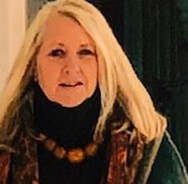 About the Author: Anne Logue now resides in Pennsylvania. Anne has studied the healing arts extensively. She is a Reiki Master, trained in Quantum Touch, certified Hypnotherapist, certified in Neuro-Linguistic Programming and Healing Touch, a form of energy healing that was founded by a Colorado native, Janet Mentegen. Anne’s ties to Colorado through Healing Touch keep her connected to the community, experimenting and developing new ways of creating change and new approaches to some of life’s curve balls. Her practice is in her home in Pennsylvania and she has done workshops and healing fairs there. Anne’s father died when she was a freshman in college. One of the ways she dealt with this was through poetry, writing and art. She wrote a story about the sun, which was her way of figuring out who she was and what she was meant to do. The Story of the Sun was illustrated by Anne and is her view of life as a 20-year-old. That view still holds meaning for her and has become a way of connecting with children and helping them learn who they are and what they were meant to do. It integrates her interest and love of the healing arts with her artistic side, bringing a refreshing look at life to the readers. The Story of the Sun was published in 2017 and is Anne’s first book. In addition to her advanced certification in Healing Touch, Anne has done extensive reading and reflection, including research on quantum physics and the holographic universe. She has done workshops and research in the Akashic Records, which are the virtual records that contain all of the information about us in our various incarnations and is a resource for incredible insight and healing. Bringing all of this information into resonance and integrating it with her personal experience has created a new way of experiencing reality. Her focus now is bringing that awareness and understanding to children. She has just finished a publicity campaign to reach audiences that may benefit. Her book has been translated into French and will soon be translated into Spanish. She has written another children’s book, which will be published in the near future. I follow an on-line program called “The DailyOM” with Madisyn Taylor. She recently featured Edward Vilga, a financial specialist. The dialogue he started with Madisyn talked about detox. He said “Detoxing is a bold decision, but once you make it, you stand at a place where you can determine and create the future you desire.” This opened up a whole dialogue in my head about “detoxing”. Detoxing is not just giving up “junk food”. Detoxing means to me, facing the bad habits, negative patterns and beliefs that no longer work for me, around relationships, money, habits, everything. Sometimes we lose clarity about our lives and when our lives are in high gear, they can become cluttered and not intentional in the actions and habits we pursue. We keep doing the same thing because to re-design our lives takes some thought and work. The pay-out is a re-structured lifestyle that helps us live the life we want, instead of creating blocks and challenges. When we want to “detox” from patterns or habits that have not been good for us, we have to look them squarely in the eye and realize all the components that they encompass. One of my most significant lessons came from reading the book by Anita Moorjani, called “Dying to be Me”. Anita had cancer which resulted in large tumors throughout her body and she was brought to the hospital at a critical time. She had a “near death” experience and from that experience she learned that as we cross-over, we no longer have our identity or the limits or filters of our identity. We are no longer male or female, no longer a race, no longer from a certain country, don’t have a particular religion, so all of the blocks associated with these descriptions of ourselves are gone and we see ourselves in an undiluted manner filled with unconditional love. So, if you have cancer and you are treated for cancer, is it the drugs that cure you, or the belief that they will heal you that does the work? Love is really the only effective treatment for any of our human woes and it is delivered to us through the belief system that we can most readily accept. Anita was taken to the hospital on February 2, 2006, by February 3, 2006, she knew she was free of cancer. Her doctors told her husband, “We have a problem, we can’t find the cancer.” Her husband said, “Why is that a problem?” and the doctors said, “Well, we don’t know how to treat it.” It took until February 27, 2006 before the hospital staff acknowledged that she had no cancer in her body and she was permitted to go home. Whether we know it or not, we are all creatures of habit and emotional beings and our learning systems are hard wired to connect with our emotions. This system is on such an integral level that we are barely aware of it, and we seldom acknowledge it. When we are trying to make a change in our lives, to adopt a new “system” or eliminate a faulty or destructive pattern, we need to approach it from an emotional standpoint. Love is the greatest motivator. If we love ice cream and associate it with happy and positive memories, when we choose to eliminate ice cream from our diets, we need to find a positive substitute. I remember when my daughter was trying to quit smoking and she called me so desperate because she had so many associations with smoking. I said “Well, why don’t you just go for a walk?” And she said, “You don’t understand, everything I do, I used to have a cigarette.” We have to unlearn and relearn our habits in order to change. Yes, it was a habit, but it was connected with positive emotional experiences.
Try listening to what you are saying to yourself each day and then determine if this conversation is someone who loves you and wishes you only good. If these are not your thoughts about yourself, you can correct them. After all, if you don’t believe in yourself, who will? As Marie Forleo says in her book “Everything is Figureoutable”, people are not failures. A failure is a short-sighed version of a longer story. If you deem an event or a circumstance, a person, really anything as a failure, it’s because you haven’t seen what happens after that event that redeems the whole situation. Look for those outcomes, figure out how this, event, person, situation can benefit you if you look at it from a new perspective. Maybe the “failure” was meant to do just that. Change the paradigm. For many years, a lot of human behavior was deemed “unacceptable” by society and so the term “in the closet” was coined. We also all know the term “skeletons in the closet”. What does “being in the closet” actually mean except pushing down all the feelings of shame, anger, worthlessness, depression, prejudice, fear and similar emotions until they are so well buried that they have altered our lives. Once they are acknowledged and someone comes “out of the closet” what happens but a turbulent cascade of feelings, releasing all of the self-doubt about who they were. Once they have the courage to be recognized for who they are, they can claim so much more and live a life being true to themselves. During the time they denied their feelings, were they worthless? No, they still could live in a manner to help others, but they were not able to enjoy the freedom and joy of knowing who they truly are. If everything is “Figureoutable” and we can re-program our thinking, lets look for the way to “detox” our thinking and eliminate the stuck habits and beliefs that create stagnant and blocked emotions. Be your own best friend and listen to the positive things you say and think about yourself!! 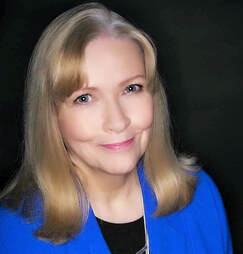 About the Author: Kate Olson, CPC, CHt, is a Life Coach, Master Hypnotherapist, EFT & NLP Master Practitioner & Trainer and Reiki Master located in Seattle, at Soul Fire Wisdom Life Coaching & Embrace Change Hypnosis & NLP . Kate offers workshops & classes, as well as, individual and group coaching. Her emphasis is on assisting clients in finding Path, Purpose and Peace. Kate focuses on integration of mind, body, spirit wellness. It is her mission to help clients find joy through connection, creative expression and embracing change. She is passionate about creativity, travel, personal growth and enjoying life. She has two other wellness-related businesses, Total Wellness Products, offering healing resources and products and Circle of Love Retreats. All four businesses operate as Dba's under Total Well Resources, LLC. Kate is a speaker, author and radio host. Her new radio show/ podcast starting in September is "Soul Fire Wisdom". Formerly she hosted "Embrace Change with Kate". Most people would agree that our feelings have a powerful impact in our lives. Feelings make us aware that we are alive and without them we don’t really function well. What are feelings and how do they function in our mind and body? How do we deal with them and why is it important? The answers to these questions give us perspective on how feelings relate to our health and wellness. As an empath, I have been sensitive to and aware of feelings (in an energy sense), my own and others. It has always been apparent to me that feelings impact our health. As a child, I could tell that my Mother’s anger was not good for her and I could see the effects on my Dad when his blood pressure went up. I knew it made me feel sick when I worried too much. That did not necessarily make me stop worrying, but I was aware of the physical effects and knew they were not good for me. In my studies as a Hypnotherapist, NLP & Reiki practitioner, as well as, my study into Neuroscience and Energy Psychology, I have found support for my intuitive suspicions. I have gotten some answers as to how things work and I am convinced that the way we deal with our emotions is a key predictor of our well-being. The dictionary gives three definitions for feelings: (1) feelings are basic physical sensations, such as touch, temperature, etc. (2) feelings are emotional states or reactions (3) a belief, such as suspicion, apprehension. (Merriam-Webster) Are feelings the same as emotions? Though related, emotions and feelings, are two sides of the same coin. Emotions are lower-level responses coming from the sub-cortical regions of the brain, dealing with conscious thought, reasoning and decision-making. They create biochemical and electrical reactions in the body and alter its physical state. Feelings on the other hand, originate in the neo-cortical regions of the brain. Feelings are initiated by emotions, but filtered by personal experience, beliefs, memories, and thoughts linked to our emotions. Feelings are the result of our brain’s perception initiating from emotions. Interestingly, the relationship between emotions and feelings works in reverse, as well. Initially, an emotion leads to a feeling. A feeling can also initiate an emotion. If you encounter a snake and experience fear, in the future, just thinking about a snake can result in activating that basic emotional response with all the same chemical reactions in the body. Nature intended that we experience emotions and they are instinctual. They can affect health if we are constantly exposed to circumstances that evoke negative or stressful emotions. The release of cortisol into our system and the impact on our adrenals, heart and blood pressure creates tremendous impact. Our nervous system and body were not meant to be in a constant state of fear and stress. Early humans, who were in constant fear, with few resources for protection and survival, did not live very long lives. There are fewer real dangers in our lives today, but unfortunately, many more imagined dangers or worries created over possible negative circumstances that will likely never occur. Anxiety and stress are prevalent in our world and they take a big toll. “Chronic Stress is linked to the six leading causes of death: heart disease, cancer, lung ailments, accidents, cirrhosis of the liver and suicide. And more than 75 percent of all physician office visits are for stress-related ailments and complaints.” (The American Psychological Association, March 21, 2014) Stress and anxiety result from feelings, the thoughts or meanings we attribute to our emotions around something in the past or future. Most of those feelings and harmful chemical reactions in our bodies are not related to what is actually happening now. We are making a choice to imagine something that may or may not ever happen. We are choosing to actually experience the negative trauma from an imagined occurrence. This causes needless illness, disease and dysfunction in our bodies and can lead to early death.
Our feelings are intricately related to our health. The medical community is beginning to realize this and place more importance on treating patients in a holistic way, taking into consideration, not only physical symptoms, but emotions and feelings in their treatment plans and assignment of expected outcomes. Research bears this out in a government study from the CDC, Healthy People 2020 Approach to Health-Related Quality of Life & Well-Being. This is definitely encouraging, but more is needed. Individuals need to take responsibility, become more aware of their feelings and learn ways to manage stress, anxiety and depression. By making better choices this can be done. We can’t depend on curing disease. It is necessary to prevent some of the dysfunction and choose to be healthier! We do have the tools to make these changes and with more awareness, we can do this! It is up to us!  About the Author: Kate Olson, CPC, CHt, is a Life Coach, Master Hypnotherapist, EFT & NLP Master Practitioner & Trainer and Reiki Master located in Seattle, at Soul Fire Wisdom Life Coaching & Embrace Change Hypnosis & NLP . Kate offers workshops & classes, as well as, individual and group coaching. Her emphasis is on assisting clients in finding Path, Purpose and Peace. Kate focuses on integration of mind, body, spirit wellness. It is her mission to help clients find joy through connection, creative expression and embracing change. She is passionate about creativity, travel, personal growth and enjoying life. She has two other wellness-related businesses, Total Wellness Products, offering healing resources and products and Circle of Love Retreats. All four businesses operate as Dba's under Total Well Resources, LLC. Kate is a speaker, author and radio host. Her new radio show/ podcast starting in September is "Soul Fire Wisdom". Formerly she hosted "Embrace Change with Kate". It might seem strange for someone who encourages you to “Embrace Change” to be talking about the power and importance of rituals, but there is a place for ritual in our lives and a balance or synergy between ritual and change is actually what is needed! What is ritual? If you look in the dictionary you will see references to religious ceremony or a prescribed and ceremonious order, that is not what I am talking about. If you look further you will see that ritual can be:
This defines the type of ritual that I am going to talk about. I have a morning ritual that I start my day with and since I have been practicing this “ritual”, I have realized how powerful it is and wondered why this is so. I did some research I’d like to share with you. I think you might want to develop your own rituals after you hear how powerful and important, they can be. First let me tell you about my morning ritual. Every morning without exception, when I wake up, I do what almost everyone else does and go to the bathroom and then I drink a large glass of water and run a warm washcloth over my face. I then go back to bed for a 10 to 20 minutes and do something similar to mediation that involves intentional positive thought focused on the moment and this day. I note what I am thankful for today, do some deep intentional breathing and I make it a point to smile. I think smiling is really important! During this time, I can feel the aches and pains lightening and leaving my body and then when I get up, I stretch out my muscles and notice how my body is feeling. I make my bed, (that really does make me feel both more organized and more motivated) and I open up the curtains and blinds in my room. My room gets a lot of light and I love looking out at the trees and greenery. I then brush my teeth and go down stairs. I open the blinds downstairs and turn on my music (always). I have to have my morning music. It is an important part of setting my mood. Sometimes, I then go back upstairs and get ready, if I have an appointment. If I don’t have appointments, I’ll make some coffee or tea and relax while I look over my schedule and check my social media and email. This is not complicated or out of the ordinary in any way, but having this simple and positive structure to start my day does some important things that help the rest of day go well. I was happy to find that there are some science-backed reasons why following this morning ritual makes everything go better. What does this ritual do for me? To start with it gets me moving in a kind, gentle and positive way. Shouldn’t we be treating ourselves with as much kindness as possible? I remember when I use to set the alarm for the last minute possible with a couple of snooze alarms and then push myself to get up with no time to orient or think, and get ready. I was usually running a little late and stressed, rushed out the door wishing I were still in bed asleep and tried to force my day into a positive direction. That never seemed to feel right and the feeling I was starting my day with was generally not positive. Can you guess how my days often went? Second, this intentional order helps me to focus, concentrate and direct my attention.
How do these seemingly simple and meaningless actions I have chosen to take do so much? There is mounting research and evidence that these rituals, though they may seem irrational and arbitrary on the surface, have a strong impact on regulating our behaviors and level of performance, as well as, setting the tone and direction of our mood and mind flow or the sequence of our thoughts. Studies in the sports field have found that simple, seemly meaningless rituals can, in fact, help us to run faster, jump higher or solve problems more quickly. So, let’s say you are a tennis player and you have a ritual that you do before every match. Which many famous tennis stars do! Let’s say, you always drink a sport drink, practice your backhand and recite a certain mantra. The act of performing this ritual in your chosen order will reduce performance anxiety, set your mind flow in a positive direction and create a success mindset, as well as, diminish doubts or thoughts around failure. We know this because there have been studies in neuroscience where control groups practiced rituals and other groups did not practice rituals and were scientifically tested measuring brain activity. They were measured for performance anxiety using brain wave neural signaling. Goal achievement and performance level were also tracked and the groups who practiced rituals performed significantly better in all cases. Personally, I think that the quality and intention of the ritual would probably have the effect of even greater performance improvement, but so far, the research shows that almost any ritual practiced routinely has the effect of lessening performance anxiety and worry and therefore, improves performance. This is great news, because it means that we can all improve performance in any area of our lives, while reducing stress and its negative health consequences by practicing simple rituals. Creating rituals is easy and we all probably already have some that we don’t even think about or realize we are doing. Getting enough sleep is one problem area for me. I am going to start there. I plan on creating a bedtime ritual that I am hoping will help me get more and better sleep. It looks like they have already proven this to be true, so I am looking forward to getting better zzzz’s already! Is there an area where a ritual might help you perform better and be more successful?  Tera Lea Day, CLSC, CHT is a certified Master Practitioner NLP Life Coach with training, education and a degree in Medical Management and Administration. She has been teaching Anger Management Awareness since 2009. Initially teaching tools and techniques to develop new communication skills, Tera found her personal journey with anger issues to be the catalyst to her teaching style of personal process in the small group environment. Tera shares that she has lived, learned and continues to apply the very techniques she teaches, learning as much from her groups as she gives to them. “My goal is to provide a safe place, without judgement for self-discovery, helping each person learn how the tools work." - www.tleaconsulting.com/ Ever feel like things are out of your control? Have you experienced a sleepless night with endless thoughts rehashing an encounter or situation that didn’t turn out as you planned? Did you experience the “Would have, Could have, Should have” syndrome or did your unconscious take you to the deep dark rabbit hole of irrational thinking?
There may be times in your life that everything seemed to be working against you. Anger and frustration set in, allowing you to excuse or blame the outcome on others. “How’s that working for you?” as Dr. Phil might said. Being stuck in the sleepless nights or days of frustration, rationalizing or playing the blame game, will not allow us to see through the muck and mire to make changes. When was the last time you took a side glance as you passed a mirror, just to make sure everything looks good from the outside? Better yet, when have you ever stopped to look in the mirror, taking time to do eye to eye inventory of you starting from the inside? Change will only occur when we are willing to be accountable to ourselves for what is ours. You cannot change the people around you or the experiences of the past. (as much as we would like to believe that we can) As with the lyrics from Michael Jackson’s song “Man in the Mirror”: “I’m starting with the man in the mirror. I’m asking him to change his ways. And no message could have been any clearer. If you wanna make the world a better place, take a look at yourself, and make a change.” Now Look in the mirror of life to learn about you. Do you like what you see? Is it time to make a change from within? Take this moment to “Accept You” for who you are, here and now. Believe that change is possible. Remember you are human with choices and decisions to make. Keep it simple and learn your warning signs when things are not working for you. What are your triggers? People, places and things can all become triggers. What are your expectations? Perhaps they are unrealistic. Are you projecting an outcome before it happens? Perception can be a projection. I realize these are questions that we do not like to ask ourselves, however, in doing so they allow us to know who we are and see the avenues to change. I found the first moment I truly “Looked in the Mirror” I had to become very real with myself. My daughter shared the following with me, and it helped me to understand I had the pen within me to write the changes into my story. YOU are the creator of your Reality & You need to take Responsibility for it… Your current situation is the result of your past thoughts & actions… You are the creator, writer, producer, director & actor in your own story… So, make your reality how you want it…. (unknown author) Now ask yourself is it time to “Look in the Mirror” and make the changes? Start the re-write on your personal story today! Remember you can always seek professional help with a therapist or life coach if you need assistance in this process. Sending Healing to all, as you “Look in the Mirror” with the Power of Change, Tera Lea Day, CLSC, Cht,  About the Author: Kate Olson, CPC, CHt, is a Life Coach, Integrative Master Hypnotherapist, EFT & NLP Master Practitioner & Trainer and Reiki Master located in Seattle, at Northern Lights Life Coaching www.northernlightscoaching.net & Embrace Change Hypnosis & NLP www.embracechangehypnosis.com. Kate offers workshops & classes, as well as, individual and group coaching. Her emphasis is on assisting clients in finding Path, Purpose and Peace. Kate focuses on integration of mind, body, spirit wellness. It is her mission to help clients find joy through connection, creative expression and embracing change. She is passionate about creativity, travel, personal growth and enjoying life. She has two other wellness-related businesses Salt Works Pods, offering Salt Therapy and Total Wellness Products. offering natural healing products. All four businesses operate as Dba's under Total Well Resources, LLC. Kate is a speaker, author and retreat facilitator. She is also a radio show host on Contact Talk Radio, www.ctrnetwork.com/embracechange "Embrace Change with Kate ". This is a term that is frequently used in the sports world! It refers to everything flowing exactly as you would want it to or have imagined it in your dreams and sometimes even better than you might have imagined. In the world of spirituality being in the zone or flowing with the Universe is also a concept that people aspire to. We call it something different though, it is synchronicity, or maybe sometimes serendipity and on occasion called “magic”. It is when all is flowing effortlessly our way in abundance for our best and highest good. As with being in the zone in the sports world, being in the zone or in synchronicity spiritually seems to come without effort, but in truth, it is the consequence of awareness and preparation meeting opportunity in the moment. It is a mindset and mind flow that has been cultivated to the point that it flows naturally and automatically. It is practice that has become habit and it is habit that have become pattern and a set of beliefs that align with our deepest and truest self. How does an athlete get to that point where “being in the zone” happens? According to an article by Mike Edger, In Sports Psychology Today, titled The Zone: “The ‘zone’ is a state of extreme focus that helps athletes in all sports perform at their peak potential. It is when your mind fully connects with achieving a goal, such as, getting a hit, or stealing a base. Attention is absorbed into the present (the here and now only). When you’re in the zone your mind only processes the thoughts and images so that help you execute your task successfully.” The National Academy of Sports describes ‘the zone’ this way- “Being in the zone, also referred to as a state of flow, comes from activities that are intrinsically motivating. There are several common elements of flow in sports: a balance of challenge and skills, complete absorption in the activity, clear goals, merge of action and awareness, total concentration, loss of self-consciousness, a sense of control, no extra rewards, transformation of time, and effortless movement.” It is apparent that much of this comes from and is a spiritual state in itself, but it also gives an image and demonstration of how we achieve or get into “the zone” or that state of synchronicity in any area of our lives. It has a component of what we are currently calling mindfulness. For instance, from the definitions above it is easy to see how a performer giving an electrifying performance has achieved that state and a speaker who is mesmerizing their audience has achieved that state, as well. Even the artist or the writer who draws their readers or viewers into their world is operating in “the zone”. It is possible to see then, how the elements that bring us into “the zone” and that magical state of synchronicity, whatever we may be doing in our lives, are very similar to the state described in sports as “being in the zone”. Just as sports goals have been achieved by adopting some of the practices of spirituality, we can achieve that state of “being in the zone” spiritually and feeling synchronicity with the Universe with similar practices. Some of those practices of spirituality that are the tools of connection are mediation, mindfulness, developing a mindset or mind flow that is consistent and becomes habit, cultivating a vision, concentration or focus, clarity, awareness, gratitude, trust and intuition and finally, belief. Like the movement of sports, movement in the spiritual sense is energy and must be effortless, timely and timeless. The athlete making that shot they have imagined and envisioned a thousand times mentally, in real time, is the same as when those things we have imagined come to us easily in other areas of life. When things, such as, ideas, creativity, money, love, security, health, or happiness just seem like they are simply meant to be, we are in the ‘zone’, in synchronicity with the Universe. It is bringing us what we have imagined and sometimes even surprising us with serendipity or “happy accidents” that align with our best and highest good. Like the athlete who sometimes achieves something never imagined when their well-practiced skills meet opportunity to create that unimagined moment, we too, can have those moments in our spiritual lives and in all areas of our life experience. The key to “being in the zone” seems to be training and honing your skills in those areas you are passionate about to the highest level, no matter what you are doing. That is the magic of it! Ask an athlete or anyone accomplished in any discipline how they achieved that moment of peak performance and they will likely tell you they don’t know – “they just feel it”, but the truth is they have cultivated and created the right mix of skills, along with mental and emotional attributes to achieve that ultimate moment. “Excellence is not a singular act, but a habit. You are what you do repeatedly.”
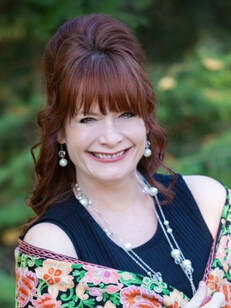 Christine Schader (AKA: Smiley) is a neuroscience nerd, an inspirational speaker, author of "The Happiness Connection", and a heart centered life, happiness, and money coach (holding some of the highest credentialing in the financial industry and owning her own financial planning firm). She is passionate about sharing the science behind Health, Wealth and Happiness, and how to apply that science to achieve your goals, dreams, and desires while simultaneously tapping into expanding joy, happiness, and bliss daily. Christine lives with purpose and passion and loves inspiring and empowering women to achieve their greatest versions of themselves and teaching them to not be afraid to Shine and brightly at that. She views herself as a lifelong student of God, love, and happiness. She has a beautiful retreat center on the Lake in Sandpoint, Idaho, has been married for over thirty-five years, and has two amazing adult children. In her spare time, you can find her hiking in the gorgeous Pacific Northwest, enjoying life with her friends and family, or clicking away at the keyboard on her next book. To reach Christine please email her at [email protected], her book is available at http://www.amazon.com/dp/B075C5L7VD Could you stand to be just a little bit healthier? How about a little bit Wealthier? Maybe even Happier? Well this article is for you! As a life, happiness and financial coach and author on these subjects, I’ve been sharing the science behind happiness and success for decades and it all really boils down to this… WTF? Oh, now, come on—that stands for “where’s the focus?” not what you were thinking! What you focus on, is what will grow. Think about it this way: you move toward what you think about. If you’ve ever taken a defensive-driving course, the instructor probably told you that if you hit a patch of ice or have an emergency circumstance, you should look in the direction you want to go, not where you don’t want to go. You end up moving the vehicle in the direction you look. The same holds true with your thoughts. You move your life in the direction of your thoughts. Therefore, you want to prime yourself to have thoughts that create the happy successful life you want. Happiness and success are skills. You actually have to train your brain by strengthening the neuropathways to fire for what you want. Scientific research has given clarity about how we can rewire the brain for happiness and success; and with a basic understanding of this science we learn how our thoughts and words literally become reality. The Science Neuroplasticity shows that many aspects of the brain can be altered throughout life. Our brain is not rigid and set but rather malleable like plastic. Scientific research teaches us that this neuroplastic change can happen when we change our behavior, environmental stimuli, thoughts, and emotions. In other words, you can actually physically change and rewire your own brain simply by changing your thoughts. Hence, we want to help select our thoughts. —and one of the easiest ways to select our thoughts or “prime our life” is to influence our thinking using affirmations, affirmative prayer, visual reminders and intentions. We want to “set” ourselves up for success by wiring our brains. The brain is incredibly influenced by priming. For example, if I were to say “wash” and then show you “so_p,” you would likely fill in the missing letter with an a, creating the word “soap.” On the other hand, if I said the word “eat,” you would likely fill in the missing letter with a u to form the word “soup.” That’s because our brains are fast, jumping to conclusions based on previous experiences and programming. This is due in part to the reticular activating system (RAS). The RAS is a small part of the brain—a set of neurons and neuro-fibers located in the brain stem—yet it plays a vital role. It allows us the ability to focus and filter information that is let into our conscious mind. Our brains take in incredible amounts of information every second and the RAS helps screen what parts of that information we actually need to pay attention to. We are created to filter down to what is really important and focus on it. The brain is designed to pay attention to things that keep us alive. We are also crafted to seek pleasure instead of pain. The RAS is helpful in filtering what gets through, deciding what’s important. The thing is, our thoughts help set up the parameters of what we decide is important. Here’s an example of your RAS in action: Have you ever noticed that when you decide to get a new (to you at least) vehicle that you start noticing that same make and model all over the place? There are not more vehicles of that make and model, you just told your brain to start noticing them. Our brains are amazingly powerful, so use your brain for yourself instead of against yourself. Now you know that what you focus on grows, and that you should prime your life. BUT… How do you tell your brain what to think about while you are in the midst of a tragic situation, a crisis, or a stressful moment? Here is where a great deal of the magic of designing a happy life exists. Between stimulus and response there is a space. In that space is our power to choose our response. In our response lies our growth and our freedom. —Viktor E. Frankl I could not agree more. I’d also add that mastering the space is where a considerable amount of your happiness lies. So how do you do that? You want to exercise and train your brain to pause before you immediately respond. To have an opportunity to choose what thoughts you want to run with. Why do you have to learn to pause? Because if you don’t, your brain will hijack you. Remember that it’s our thoughts that create our emotions, which create our perceptions, which create our beliefs, which create our responses and behaviors, which affect things like our relationships and ultimately shapes our entire life. Therefore, the secret to sustained happiness is to learn to expand the space (create a pause) between stimulus and response so that you can decide how you want to respond instead of having your fast brain decide for you. You have over 60,000 thoughts per day, and most of those are the same thoughts you had yesterday. If you want to change your life, you need to change your thoughts. In order to do that, you need to learn how to create a pause, in order to allow yourself time to decide what you want to think.
Remember, the brain has this amazing ability to do some awesome editing. It then presents an immediate response due to all your years of programming and your RAS. As a result, you view that response as reality, the only truth. In fact, though, that was only one option or way of seeing the world out of literally tens of thousands of choices. We can actually retrain our brain to respond differently. We can program it to pause between the immediate situation (the stimulus) and our response. Then we can decide which response we want instead of going with the first edited choice presented by our fast brain. How do we do that? We slow down our fast brains so we can create the space to choose. We exercise and strengthen the ability to pause between stimulus and response, and we allow ourselves to see several ways of looking at the situation and deciding carefully which choice we want to feel and which way we want to lean. The magic lies in the pause and realizing you can change how you are feeling at any moment, even while in the midst of a situation. MFI And how do you create the pause? You need to craft and master “interrupter skills.” What do I mean by that? You need to be able to purposely construct an interruption to stop the current thought flow and ultimate reaction so that you have the ability to have another thought—any other thought. If you do not pause, you will continue to feed your current thoughts, emotions, and feelings. And more and more chemicals to match those thoughts will be dumped into your body, which will create even more feelings and thoughts and more chemicals. So next time, when your mind is doing a number on you (a mind freak-out or more bluntly a mindfu@k), how do you interrupt your brain so you can even entertain a new thought? I have developed several MFI (“mind freak-out interruption”) skills. For example, when in a situation with another person, one of my favorite MFI skills is to remind myself that I am the author, star, and director of the Christine show and to ask myself how I want my star actress to respond in that moment. How do I want this happy ending to happen? How would my highest self, respond? And then I can shift. Sometimes, I actually say “plot twist” out loud and choose a new scene. When my mind is simply playing over and over a situation and continually feeding a response that results in a feeling I don’t want, I seek to interrupt that cycle. I may just need a distraction from the situation, so I get up and go for a walk, see a movie, pick up a book, or call a friend. Other times, I imagine I have a large “pause” button in my brain that I can push at any time. Do anything to stop the negative, unwanted self-talk or thoughts so that you can allow another possibility to be entertained. Shopping for Happiness So now, you’ve mastered the pause. You’ve created and are practicing your own interrupter skills. Now what? How do you choose another thought? This is the easy part: you get to go shopping! Shop for how you want to feel. Shop! Woohoo! Shop to your heart’s content! Shop, shop, and shop some more!! It’s the best shopping ever, because you are shopping for happiness. Creating the interruption allows you space for another thought or way of looking at things. You now have the ability to ask yourself, “Is there any other way to look at this? How could this be useful? Are the things I am telling myself true? Is there another way to interpret this? How can this be useful? What else could this mean? What can I learn from this?” When you can change your perceptions, you can change your life. Perception is active not passive. YOU control your thoughts. You get to choose how you want to look at any situation. Remember, situations do not have inherent meaning. You assign a situation meaning based on your fast brain. Past experiences, values, and beliefs about yourself and others determine how you interpret the event. When you shop for happiness you allow yourself the ability to choose another way to look at the situation, to see things differently and to lean into how you want to feel about it. You get to choose how you view it and pick what serves you, what feels good. In coaching we call this ability to shop for happiness- reframing. When you can shift how you look at things you can shift your experience of it. Give yourself at least four or five other ways of looking at it before choosing. Often, I suggest throwing out the first and second thought and continuing to come up with alternative options until you find one that moves you in the direction you want. I’m not talking window shopping here. I want you to actually try the thought on, see how comfortable it is. You know, when you go shopping for a new pair of jeans, you most likely don’t buy the first pair you see. If you are like me, you take a dozen pairs into the dressing room. You put them on, and you see if they stretch and move with you, if they’re comfortable, if they’re a good match for your body type. You try on pair after pair until you find the one that fits just right. Well, I want you to do the same for your thoughts. Try them on. Do they feel good? Do they make you feel expansive, light, better? Or are they tight, constrictive, and limiting? You’ll most often find that you want to lean into the good. Keep in mind that all of life is energy, and that energy is expansive. If you want more joy and happiness in your life, you need to lean into that energy. I will most often choose to lean into the good—not always, mind you, but most often. So, give yourself a chance to shop for how you truly want to feel. Remember, it is never the thing, it is always what you think about the thing! Once you understand that every thought you think, every word you speak, and every belief you hold is a brushstroke in the painting of your life, you begin to see the magic you bestow upon the creation of your life’s masterpiece. 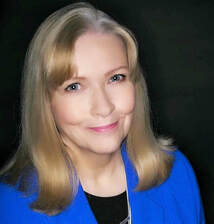 Kate Olson, CPC, CHt, is a Life Coach, Integrative Master Hypnotherapist, EFT & NLP Master Practitioner & Trainer and Reiki Master located in Seattle, at Northern Lights Life Coaching www.northernlightscoaching.net & Embrace Change Hypnosis & NLP www.embracechangehypnosis.com. Kate offers workshops & classes, as well as, individual and group coaching. Her emphasis is on assisting clients in finding Path, Purpose and Peace. Kate focuses on integration of mind, body, spirit wellness. It is her mission to help clients find joy through connection, creative expression and embracing change. She is passionate about creativity, travel, personal growth and enjoying life. She has two other wellness-related businesses Salt Works Pods, offering Salt Therapy and Total Wellness Products. offering natural healing products. All four businesses operate as Dba's under Total Well Resources, LLC. Kate is a speaker, author and retreat facilitator. She is also a radio show host on Contact Talk Radio, www.ctrnetwork.com/embracechange "Embrace Change with Kate ". As I write this, I am myself grappling with self-motivation & self-discipline. For myself, I much prefer to be motivated rather than having to use discipline. I guess I am a bit of a rebel, as I always seem to want to balk a little at being pushed, even by myself for my own good! Perhaps that’s one of those limiting beliefs I should work on? However, finding the motivation isn’t always easy and keeping it up over a long period of time can be extremely challenging. Self-discipline is needed to keep up the level of performance we need to reach and maintain our desired goals. This is a push, pull scenario and it turns out we need both the push and the pull to keep us moving productively toward our dreams. How can we find that balance between the push and pull where we don’t feel we are either bullying ourselves or get stuck because we can’t find that motivation at times? First, we have to realize that it is a synergy and not an either/or situation. We need to use both motivation and discipline on a continuous basis and use them as our fuel and tools to accomplish what we want and need. And, maybe if, like me, you have beliefs or ideas that are making things more difficult, work on letting those go! As I sit here pushing myself to write this blog, I am reaching for that motivation that will make it a little easier. I haven’t found it yet, so the pushing is needed, but I am hoping before the end some positive and inspiring motivation will pull me up the hill. You can always feel it when it kicks in. It’s like stepping on the gas or something clicking into place or that “aha!” moment when we finally get it! I think discipline is harder for me now partly because I have created a life that is pretty motivating and inspiring to me most of the time and that is generally a good thing. In the past, I had to discipline myself more often because a lot of what I needed to do were things I did not like or want to do. I could not have functioned without a lot of self-discipline. I did it, but I wasn’t happy most of the time and I didn’t like my life. I was pushing myself up hill all the time and it was exhausting! Now the things I love doing are constantly pulling and sometimes propelling me forward. Still there are things I need to do that require that push. Right now, due to some temporary circumstances, there are more of those than I’d like. I feel a little exhausted looking at the hill I need to push myself up and possibly like there is a mean taskmaster with a whip following behind me beating me up a bit. How can I change this picture, scenario and circumstance? I am really framing this as I go, and see that some reframing is needed! Can I look at this differently in a way that will change the picture in my head and the reality of my feelings and actions? Luckily, I know that I can and so can you --- with whatever pictures and limiting beliefs you have hanging around in your head making life more difficult and not serving you well! This is something I learned in a useful context as part of my NLP (Neurolinguistics Programming) training and in studying neuroscience. So, here I am getting a little excited about seeing how I can change my reality and using these amazing modalities to make my reality a little easier, better or more of an energy flow that feels “good” or “right” to me and removes that resistance or blocks I am currently feeling. Whoa! That feels good! I think something is beginning to click and lead me in the right direction to make a big change in my picture of discipline.
With what I have going on in my life right now, I really need that! A big dose of self-discipline could propel me forward and make all the difference between a big win and a big crash! Let me look at the big picture and concentrate more on how that looks, how that feels! Hmmm? I’m liking that picture! I’m feeling good about how it seems real! It seems like I could actual get there and maybe it wouldn’t be hard! Maybe it would be easy with just a little push from me and some self-discipline. It feels like a reward and not something I want to rebel against. I am going with this now and I think it may work! Changing my thinking on the push and pull and the feelings behind it, does change things! We can all do this with whatever is holding us back and keeping us stuck! We are not limited by our thoughts. They are literally something we have created, and therefore, have control over! It is up to us and that is so empowering! We just have to start recognizing and using this amazing power when we feel resistance and our energy is not moving and flowing forward for our highest good. To break it down, when you find yourself blocked and resisting what you know you need to do, recognize that you are dealing with those push/pull dilemmas where changing the pictures in your mind and your feelings about them is needed to make things work and find that balance between self-motivation and self-discipline. You need to get them working in synergy. There may be more than one picture or limiting belief involved and you might have to work on all of them to get things in line, as with me, in my current situation I needed to change my picture and feelings around more than just self-discipline in order to resolve the issues blocking my best energy and keeping me struggling. The process of doing that though is the same. You have to first recognize the picture, thought, or limiting belief that you have created and that it is holding you back. Then go about reframing and changing that picture to one that is going to make it easier to flow forward toward your desired outcomes. Different picture, different thought, different feeling and different actions equal different outcome. It isn’t easy, but it does work and is so worth it! Now watch me ramp up my self-discipline and get motivated to change my story in a big and positive way! “True excellence is a product of synergy!” – Mack Wilberg Creating a synergy between self-motivation and self-discipline will keep us moving toward our goals and using tools to remove any blocks or limiting beliefs we have created and will allow us to take action and keep our energy flowing positively forward!  About the Author: Shelley Abrams spent close to 25 years as a corporate technical writer before branching out on her own in 2010. She loves writing, research and the diversity being a freelancer offers. She’s contributed to blogs on spirituality, personal development, mindfulness, and health and wellness. She has written and maintained philosophical and spiritually based content for a paid membership site. She has an MBA, as well as a certificate in non-fiction writing. When she’s not writing, she likes being out in nature or just reflecting in the quiet. She finds history, geography, philosophy and meta-physics fascinating. She also loves traveling, meeting new people and experiencing different cultures. To learn more about Ms. Abrams’ writing experiences, visit her website at www.write2spec.com. Struggle. When you hear this word what image does it conjure up? For me, I think of conflict, obstacles, defeat, stress, overwhelm and being beaten down. Struggling often paralyzes us, makes us fearful and unwilling to keep pushing forward, and for many it becomes a vicious cycle that one cannot escape from. Struggle is suffering and suffering is struggle. It is our nemesis, yet while we resist struggling, we also accept this reality in our subconscious because we’ve been told through millennia that struggle is a natural, inherent part of life. In many schools of thought, struggle is even desirable, as it “builds character”. We’re constantly told that struggle is necessary for success, that it makes us stronger, that it makes us who we are! And who are we to argue? After all, it’s influencers like spiritual teachers, religious leaders, philosophers and personal development gurus who have engrained this into our psyche over the years. “Success is not measured by what you accomplish, but by the opposition you have encountered, and the courage with which you have maintained the struggle against overwhelming odds.” Orison Swett Marden STRUGGLE VS SUFFERING – IS THERE A DIFFERENCE? So, let’s take a step back. What exactly is struggle? How is it defined, and how did the concept that struggle is necessary come about? The dictionary defines struggling as “striving to achieve or attain something in the face of difficulty or resistance.” It is similar to the definition of suffering, which is “the state of undergoing pain, distress or hardship”. Suffering and struggle have become synonymous over the centuries when talking about becoming better (as in a better person, better society, better world, etc.). “Out of suffering have emerged the strongest souls; the most massive characters are seared with scars.” Khalil Gibran The concept of struggle goes back eons, with Heraclitus of Ephesus being credited with saying that struggle is the father of everything. As time passed, struggle was tantamount to natural selection - “survival of the fittest”. Scholars like Thomas Hobbes and Matthew Hale wrote about the struggle for resources amongst humans. Immanuel Kant felt that the “inner and outer struggle” was the catalyst for one becoming a “viable citizen of the world”. These theories were brought into mainstream thinking by Robert Thomas Malthus and Charles Darwin in the 18th and 19th century. Suffering as a concept is as ancient as that of struggle. First, suffering was equated with knowledge, as noted in ancient Greek mythology and early Christian theology as told through origin stories such as the Garden of Eden. Next, suffering and punishment became one and the same. This theory was supported by all the major religions of the world, from ancient times through the Middle Ages. In essence, this belief says that if your God was displeased at how you lived your life, God punished you and you suffered accordingly. If you changed your behavior – persevered – you were granted relief and you became a “better person”. Even today, many people consider adversity and struggle as punishment for not believing or acting a certain way and more importantly, they feel they deserve it. From there, the belief that struggle was suffering and suffering was punishment evolved into the undesirable need for wanting, or craving. This was particularly true in Hindu and Buddhist teachings. Basically, this viewpoint says that if you crave something, you are seeking pleasure and pleasure leads to more craving. In turn, you must suffer because you are no longer on the path to enlightenment. To avoid this form of suffering, you must let go of the need for want and experience the quiet mind. This belief still exists today – that in order to be happy, one must understand that the source of suffering is wanting. Eventually suffering morphed into being a necessity to finding happiness and success, which is the belief held and taught by many spiritual teachers, philosophers and religious leaders of the modern era. LIMITING BELIEFS
So now that we know how struggling and suffering came about, let’s explore limiting beliefs. A simple definition is that a limiting belief is something which constrains us in some way. Generally, limiting beliefs are something we acquire throughout our lives as a result of our experiences, especially those that overwhelm us as a child. It is a coping mechanism our minds created to help us accept, adapt and endure - in other words – to survive! A couple classic examples of a limiting belief are “I’m not worthy”, or “I will never be successful.” You might have failed at something as a child even when you tried your best. You begin to doubt yourself and tell yourself that you can never be successful. Voila, you have created a limiting belief! Perhaps your family berated you when you asked for something or didn’t live up to their expectations, by telling you that you didn’t deserve it. Over time, you adopt the mindset that you are never worthy of the things you want or the good things that come to you. Wow, you’ve created another limiting belief. It happens that easily and quickly. Whatever the trigger was initially, these experiences and thoughts become beliefs that you live by. They are buried deep in your subconscious yet they drive everything you do. And they affect all areas of your life. They manifest as oft repeated cycles of overwhelm, worry, fear, beating yourself up and self-sabotage. You feel stuck and don’t believe there is anything you can do to change it no matter your actions or how many times you’ve tried. This happens even when you get a fleeting taste of victory (as in overcoming the challenge). You don’t believe you deserve it. The cycle of struggle starts anew. If we’ve been told all our lives that nothing comes easy, that struggling and suffering is necessary to be who we are - to be strong, to succeed, to find happiness - we come to accept suffering and struggling as the only way to get what we are seeking. We don’t like it, we resist it, but we also resign ourselves to it - que sera sera. “If you come to accept a limiting belief, then it will become a truth for you.” Louise Hay Don’t get me wrong. Everyone faces challenges in life. It is part of being human. But believing that challenges can only be overcome through adversity, struggle and suffering is limiting and holds you back from your true potential. OK, NOW WHAT? So how do we get past this? We have to let go of the limiting belief that struggle is a necessary evil to become our best selves and to live the life we are meant to live. This doesn’t mean giving up or thinking that the challenge you face isn’t real. It just means you “stop being afraid of what could go wrong, and start being excited about what could go right.” We also need to believe that any challenge we encounter offers us a lesson to learn and the need to take action – not retreat from action. “I believe my life has no limits. I want you to feel the same way about your life, no matter what your challenges may be.” Nick Vujicic, Limitless To do this you must first acknowledge that struggle (or suffering) is a limiting belief you have. Next, spend some time in a quiet reflective state with a pen and paper and ask yourself what thoughts (limiting beliefs), good or bad, contribute to the challenges you currently face. For example, you feel like you “struggle” financially because you never seem to have money left over at the end of the month to do something fun. Given that, a related limiting belief you always tell yourself might be “I can never afford that”, or “I’ll always be in debt”. Once you have identified your limiting belief, replace it with something affirmative. For example, I constantly hear myself saying (to myself and others) “I can’t afford this”. I do this unconsciously whether it’s true or not. Every time I say or think it, I’m reinforcing a limiting belief that I struggle financially. To overcome this, I make a concerted effort to rephrase “I can’t afford this” to “I choose not to buy this right now as I have other priorities”. In doing so, I tell the universe and my mind that I am making a choice, rather than giving into a feeling of hopelessness and a pattern of believing I lack abundance. Then, start acting like you believe your new narrative. Using my example above, I allow myself an occasional splurge or I visualize that lifelong trip I’ve always wanted to take with excitement. Don’t be reckless of course, but do believe it can happen for you! And finally, let go of the limiting belief – surrender the struggle. Be flexible, try to see things with new eyes and plot out a new course of action that embraces the challenge and overcome it, rather than succumbing to it. Do this and you’ll find that struggle is no longer your reality. “Begin today. Declare out loud to the universe that you are willing to let go of struggle and eager to learn through joy.” Sarah ban Breathnach  Kate Olson, CPC, CHt, is a Life Coach, Integrative Master Hypnotherapist, EFT & NLP Master Practitioner & Trainer and Reiki Master located in Seattle, at Northern Lights Life Coaching www.northernlightscoaching.net & Embrace Change Hypnosis & NLP www.embracechangehypnosis.com. Kate offers workshops & classes, as well as, individual and group coaching. Her emphasis is on assisting clients in finding Path, Purpose and Peace. Kate focuses on integration of mind, body, spirit wellness. It is her mission to help clients find joy through connection, creative expression and embracing change. She is passionate about creativity, travel, personal growth and enjoying life. She has two other wellness-related businesses Salt Works Pods, offering Salt Therapy and Total Wellness Products. offering natural healing products. All four businesses operate as Dba's under Total Well Resources, LLC. Kate is a speaker, author and retreat facilitator. She is also a radio show host on Contact Talk Radio, www.ctrnetwork.com/embracechange "Embrace Change with Kate ". Sometimes it is necessary to move forward, change course or let go when you have been pursuing a particular course or goal for a while. This is always difficult, and especially when we may feel we are giving up on something that is or was important to us. How do we decide if and when it is the right thing to do? The idea that we need to keep going, “never give up - you will eventually succeed” is drilled into us and when something is important, we definitely don’t want to give up too soon and fail to achieve a goal we have worked for and really want to achieve. However, things do change. Priorities can change, new opportunities may present themselves or information may come to light that changes your goals, desires, priorities or perspective on something. How do we know when it is not only time, but necessary to make the shift and let go of an old vision, in order to pursue a new direction and new or different vision? This is not quitting, but something else. It is not that we feel it is too hard, out of reach or we have self-doubts about our ability to achieve the goal. It is realizing that something has changed and as a result, it is our desire and in the best interests of our highest good, according to our values and intuition to move in a new direction. Giving up one valued vision and replacing it with something new that now feels right for us, is not easy, but sometimes we need to make this tough decision. It becomes easier if we are in touch with and trust our intuition, but fighting with our logical reasoning may still be a battle. Is there a process that we can go through to make this decision feel better and make it easier for us to “turn the page”, so to speak? There are definitely some questions we should ask ourselves and possibly some assumptions and beliefs we need to evaluate and question in order to make this process move forward and feel we have come to a valid and necessary decision. I am at such a point in my own life now and I have recently watched a couple of other people go through this difficult, but necessary process, so it has been on my mind as to how we can proceed with the least amount of difficulty, knowing we are doing what is right for us and not quitting or giving up on a prior goal. There are a number of circumstances in life that tend to lead to these types of changes and then there are the ones where we are propelled forward by something previously unacknowledged or some amazing opportunity. Some of the circumstances that may lead to the necessity to make a change in direction are things like health, the death of a spouse or loved one, divorce or dissolution of a marriage or partnership or a change in economic status for any number of reasons. These are circumstances that we do not generally choose, but they are thrust upon us by life and we have to adapt. They can leave us in complex circumstances that require us to change direction and reevaluate previously set goals and aspirations. The whole framework on which those goals and aspirations were based has changed and we must see things in a new context and move forward with a new outlook. Many people have made these kinds of transitions and changed their goals, plans and the course of their lives in adapting to them. It was what they had to do to move forward and not quit on life. It can be very much the same when we make a change and decide to go in a different direction for reasons that are not so obvious or are more a matter of choice than those thrust upon us by life circumstances. We are still seeing a significant shift in the parameters that we previously used to set our goals and aspirations, and therefore a need to reevaluate and consider a different direction. It can be due to a perspective that we did not previously see, a change in some contributing factor or an opportunity that did not previously exist or was not part of our awareness. It can also simply be the passing of time. Many people as they get older and realize they have less time to live will change their priorities. This is a matter of coming to terms with an inevitability that always existed, but we had not considered it in the same light and deciding that perhaps one thing is more important to us than another. We can not always have everything we want or aspire to and it sometimes becomes necessary to decide what is more important. Do you want to travel or invest in an expensive hobby? Is it more important to have money in the bank or experiences and stories to remember? Is owning our dream car or a home with a view a priority or would we rather spend time doing things we love with family and friends. Sometimes we can do both, sometimes we need to make a choice, even when it comes to our dreams and goals.
Asking ourselves the tough questions to become fully aware of what our values are and what is most important to us is the key to making these decisions and feeling comfortable with “turning the page” and moving forward. You have to really know that you are following your bliss and not giving up something for something lesser. When you know you are choosing what you value most, you will be able to move forward without regret and know you are doing the right thing. Even when the decisions are hard and something is left behind with perhaps, bittersweet laments, you will know it is the right thing for you right now! So, turn that page and get started on creating your new journey and masterpiece story! 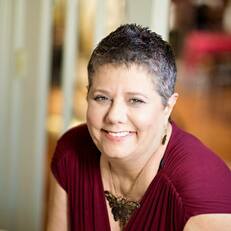 About the Author: Edie Weinstein, MSW, LSW is a colorfully creative journalist, inspiring transformational speaker, licensed social worker, interfaith minister, editor, radio host, BLISS coach, event producer, Cosmic Concierge, the author of The Bliss Mistress Guide To Transforming The Ordinary Into The Extraordinary and co-author of Embraced By the Divine: The Emerging Woman’s Gateway to Power, Passion and Purpose. She has also contributed to several anthologies and personal growth books. Edie has interviewed such notables as Ram Dass, Wayne Dyer, Debbie Ford, don Miguel Ruiz, J Marianne Williamson, Grover Washington, Jr., Noah Levine, Shirley MacLaine, Dennis Weaver, Ben and Jerry and His Holiness the Dalai Lama. She calls herself an Opti-mystic who sees the world through the eyes of possibility. Edie writes for The Huffington Post, Psych Central, Beliefnet, Elephant Journal, The Good Men Project, Expanded Family, Meaningful Mom, Bucks Happening, Montco Happening, Hunterdon Happening, as well as a growing number of other venues. Edie is the founder of Hug Mobsters Armed With Love, which offers FREE HUGS events on a planned and spontaneous basis. She also facilitates a workshop called Cuddle Party which is a 3 1/2 hour opportunity to engage in safe, nurturing, non-sexual touch by consent. Communication and boundary setting skills are taught as well. www.opti-mystical.com Like many who are reading this, I am a Renaissance person, a serial entrepreneur, what I refer to as ‘professionally polyamorous,’ with many overlapping career paths offering financial support and emotional gratification. It has been this way for as long as I can remember. Throughout my adult life, I have been a lifeguard, swim team coach, massage practitioner, teacher for adults and children, practice patient for a medical school, social worker, addictions counselor, bereavement specialist, therapist, ice cream parlor scooper, waitress, artists’ model, clown, life coach, journalist, editor, book author, magazine publisher, interfaith minister, radio host, event producer, PR Goddess, greeting card writer, organ donor educator, support group facilitator, as well as active volunteer. I refer to myself as a ‘Cosmic Concierge,’ which means that I am well connected and know how to help people find resources. My path continues to unfold before me. Periodically, I find myself (or lose myself) in feeling as if I am not doing enough fast enough for my nagging, nudging inner critic. That’s when I do something that I recommend for overachieving Type A’s…I Google myself! When in doubt, you can check it out too. You may be surprised at what you have accomplished. When I do that, I got a goofy grin on my face as I shook my head and think, “Wowie, that woman is busy!” When I can view myself from an outsider’s perspective, I can allow myself to relax, at least for the moment. Then, in typical fashion, I am off to the races again. I chalk it up to being the daughter of a mom who, in my early childhood, worked from home as an Avon Rep., gate guard at our community pool in the summer, columnist for our local newspaper and designer of doll clothes. I would laugh at the cosmic coincidence that her boss for that last job was Mrs. Handy. In addition, she too was a volunteer, at the hospital, with Girl Scouts, and at the elementary school my sister and I attended. When Jan and I were old enough to be latchkey kids, she went to work as a switchboard operator at Sears until she retired at 65. My father focused on one job for decades as a milkman for two different dairies and then shifted gears (no pun intended) and became a bus driver for SEPTA (the regional transportation company). Both instilled in me a sense of responsibility and told me that I could do whatever I wanted professionally as long as I enjoyed it and could support myself. They never said it would be single focused, thank goodness. Not sure how someone can remain in the same job for a lifetime. My curious mind is always reaching for new ideas. As the Grammy and Academy Awards have just occurred, I found myself fascinated with the success stories that played out on the screen. There was a time when each of these folks were not household names. I was delighted to hear that Brandi Carlile won Best American Roots Performance and Best American Roots Song for “The Joke”, and the album the track comes from, By the Way, I Forgive You, was named Best Americana Album. I initially heard this kick ass singer songwriter on member supported Philly based radio station WXPN around 10 years ago. The stirring song honors people who are marginalized and endangered, being seen as out of the mainstream.
Rami Malek who rocked the screen and world as he embodied Freddie Mercury in the epic Bohemian Rhapsody was handpicked after being seen in the television show Mr. Robot. It was the role of a lifetime and likely will catapult his career even further. These are just two examples of those who likely had big dreams that they fed, watered and nurtured. I wonder who was on their team of yaysayers and if they faced naysayers who told them they wouldn’t reach that pinnacle. When I hear acceptance speeches, I am touched as award winners thank their families, friends and colleagues who lifted them aloft. In my own life, are many who fall into the first category and blessedly no one in the second group. Despite that, I still waver and doubt that my own vision for my life will play out the way I desire, all evidence to the contrary. It’s then that I turn to tried and true tools. One is what my friend Ruth Anne Wood calls Scripting For Success which is a vast toolkit of ideas to bring to here and now reality what we may only have mused about casually. How to cultivate your glorious garden:
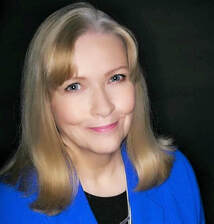 Kate Olson, CPC, CHt, is a Life Coach, Integrative Master Hypnotherapist, EFT & NLP Master Practitioner & Trainer and Reiki Master located in Seattle, at Northern Lights Life Coaching www.northernlightscoaching.net & Embrace Change Hypnosis & NLP www.embracechangehypnosis.com. Kate offers workshops & classes, as well as, individual and group coaching. Her emphasis is on assisting clients in finding Path, Purpose and Peace. Kate focuses on integration of mind, body, spirit wellness. It is her mission to help clients find joy through connection, creative expression and embracing change. She is passionate about creativity, travel, personal growth and enjoying life. She has two other wellness-related businesses Salt Works Pods, offering Salt Therapy and Total Wellness Products. offering natural healing products. All four businesses operate as Dba's under Total Well Resources, LLC. Kate is a speaker, author and retreat facilitator. She is also a radio show host on Contact Talk Radio, www.ctrnetwork.com/embracechange hosting "Embrace Change with Kate ". We are by nature creatures of habit. Habit as defined by the dictionary is “an acquired behavior pattern regularly followed until it has become almost involuntary”, and forming a rote and ritual pattern of behavior is part of our learning and development process and how our brain works in all of our learning processes. Neural pathways are formed by repeated behavior. After enough repetitions an action or behavior becomes natural and given the same stimuli, we perform that act or behavior without even thinking about it. It simply seems like the right, natural and correct thing to do. Habits have gotten a bad rap and sometimes we think of them only in the negative sense because so many of them are formed without intention, starting when we are so young that we don’t even realize we are making a choice. When you are a baby and you feel hungry you naturally cry, signaling distress and discomfort. You don’t think about it, you just do it. However, it doesn’t take long before you learn that crying gets a favorable response (in most cases) from your caretaker and results in you being fed and those uncomfortable feelings being relieved. You learn that crying results in a reward or favorable response so crying becomes a habit whenever you feel uncomfortable, a need or a want. This makes habits well-rooted in our behavior and often difficult to change, however, the good news is we can just as easily cultivate good habits as we can bad habits. According to Neuroscience, there is an area of the brain that deals with the formation of habits and as I mentioned that involves forming new neural pathways. Research has determined that it takes about three weeks to form a new habit. (Sharon Eakes, The Systems Thinker, www.thesystemsthinker.com) if we repeat a behavior consistently over a period of three weeks it forms a new neural pathway or circuit in the brain and becomes an unconscious response and what we call a “habit”. This is really good news as it gives us evidence that it is not necessary to spend a lot of time fighting or trying to change “old habits” which are no longer serving us, but that we simply need to form a new “more positive and desirable” habit. By doing it repeatedly for about three weeks, that newer, stronger neural pathway will replace the old one. This is also a natural part of our learning process and we do it on a regular basis as we are growing up without thinking about it consciously. I mentioned that a baby learns to cry when they are hungry to communicate need and discomfort. Over time this becomes a habit whenever the baby feels discomfort, need or want. As the child grows and develops other ways of communicating this feeling and state develop. The crying behavior becomes undesirable, unacceptable or annoying and the child learns a new response to communicate discomfort, need or want. They don’t consciously think about this in most cases, but the feedback they are getting stops working in a rewarding and positive way and they learn that other behaviors are more effective and as they start repeating those more acceptable and effective behaviors, in a short time they learn that asking for food verbally is working better and it becomes the new habit when they feel hungry. Any parent who has ever tried to force a child to stop crying will be able to tell you just how daunting a task that is. However, giving the child a new behavior to perform and practice when they experience certain feelings works marvelously well.
“Moral excellence comes about as a result of habit. We become just by doing just acts, temperate by doing temperate acts, brave by doing brave acts.” --- Aristotle While many habits are formed without conscious intention, it is also possible to form new habits by intentionally repeating a specific action or behavior over and over again until it forms that new neural pathway and becomes a habit. There are some tips that are very helpful in forming new habits:
The very best discovery that has been validated by recent studies is that “you can teach an old dog new tricks” and it is possible to form new neural pathways throughout our lives. This is called neuroplasticity and tells us that we can form new habits through out our lives and the more we do so, the healthier our brains will be and stay as we age. We never become to old to change and new desirable habits that serve our current needs and goals can be cultivated throughout our lives.  About the Author: Dr. Anna Margolina is a Master NLP practitioner, Licensed Trainer of NLP, hypnotherapist, scientist, Author & Speaker. She graduated from the Russian State Medical University in Moscow Russia in 1996. Anna has worked as a science editor and science writer for the Russian Cosmetics and Medicine Journal since 1997. She published a number of books in Russia on science-based skin care. Anna moved to Seattle in 2001. In 2009 while dealing with personal issues, she became interested in NLP and hypnosis and was certified in 2013. Currently, Anna is developing a program for women who want to look younger and more radiant using the power of their unconscious mind. www.agelesswithhypnosis.com How I realized I had a happy childhood. I was attending my first seminar with Dr Richard Bandler. You can imagine my excitement. I was in a presence of a living legend – a co-creator of Neuro-linguistic Programming. Probably the best part of NLP seminars is watching volunteers being brought on stage in various degrees of distress and misery. This time, Dr. Bandler selected a very prim and proper looking young man in a business suit with a red tie. I watched with fascination as this very serious-looking man started giggling and then laughing and beaming, as he was led into hypnosis from one pleasant, joyful memory to another. Those were not small reserved smiles! Oh, no! That man was glowing and glistening with delight! When Dr. Bandler finally had him face some disturbing events in his past, the man apparently couldn’t remember how bad it felt in the first place. His whole attitude changed. He didn’t even look the same! Then Dr. Bandler looked at the rest of us with a twinkle in his eyes and said, “Here is what I want you to do. Grab a partner and do with each other, what I just did on stage.” I raised my hand with a question. “Yes?” asked Dr. Bandler. “Dr. Bandler! I cannot do this exercise!” I said. “You said, ask them to remember a good memory, but I have no good memories. I didn’t have a happy childhood!” And with this, to my own astonishment, I broke into tears. Here I was, at the NLP seminar with Dr. Richard Bandler, bawling my eyes out, sniffling, my shoulders shaking, making a spectacle of myself. No, I didn’t want to go into my past. I locked that door. How could he not see that I couldn’t bear facing my pain, my fears, my struggles. Just one memory, which immediately popped into my mind, brought a waterfall of tears. That, alone was enough to ban time travels. In this memory I was in a school yard, looking at three bullies, who were laughing and pointing at me, as I tried to say something in my defense. The problem was, I couldn’t, because I stuttered so badly, all I could do is to struggle and stomp my feet and clench my fists, which apparently was hilarious. It is hard for me to imagine that at this point I truly believed that I had a terrible childhood and didn’t have even a glimpse of joy. Intellectually, I knew I must have had some good things happen to me, but I also knew there were experiences I didn’t want to revisit. It is so hard for me to imagine that time when I didn’t know that our past could be changed, re-invented, re-experienced, re-evaluated and re-enjoyed. As Dr. Bandler likes to say – it is never too late to have a happy childhood. In order to change the past, we first need to find the original recording or memory of the event. Not the later narration or rationalization. I mean the original sensory experience. Whatever experiences you were sensing with your eyes, ears, nose, skin, taste buds, olfactory sensors, and whatever was felt and experienced in the moment as the event unfolded. This can be done through various hypnotic techniques, such as the affect bridge, timelines or various metaphors. In the affect bridge technique, a person is asked to travel from the most recent event, that caused a particular emotion, to more and more recent events linked by the same emotion. I see in my mind such events as islands, connected to similar islands through bridges. Each bridge is made from a certain emotion. You can imagine walking from one island to another way into the past, until you reach the very first episode, where this emotion was first experienced. In the timeline technique, you imagine your life as a road. You either walk back into your future, or you float above the timeline, until you find this first event. Some metaphorical techniques include turning pages of the book of your life, walking through the long hallway with many doors leading into your past events, walking down the spiral staircase from one memory to another etc. Whatever technique is chosen, it has to accomplish one important task – revivifying the original sensory experience. It is a good practice to teach a person (or yourself) to step out of the sensory experience into the observer position, if the emotion becomes overwhelming. When you realize that you can always reduce the intensity of a feeling by stepping out of the sensory experience into a more detached viewing point, emotional time travel becomes much easier. It is important to treat this past event as if it is happening now, in a sense it is. Always use the present tense, when talking about the event. Our brain is not that good at distinguishing real events from vividly imagined or remembered events. Whatever we imagine, affects our feelings and even our mind and body, as is it is happening now. However, the power of the hypnotic time travel is that we can make changes. For example, what will happen if a person reexperience the memory, while having a different neurochemistry? What will happen if this person is given new knowledge to help form new, more up-to-date, more functional and more useful beliefs about the event? This is exactly what Dr. Bandler did for that young man on the stage in his example. He made the young man laugh and he led him through a sequence of delightful, pleasant memories, which saturated his body with feel-good neurochemistry. The curious thing about neurochemicals is that it takes a while to make them and reach the point of saturation, but once you accomplished this, it also takes a while to flush them out of the body. When we look at the same traumatic experience from a much more resourceful state, with much more knowledge and much more life experience, we can find new ways to respond.
I was back in the school yard, looking at my tormentors. Only now, I was looking at this experience from a more resourceful state. I knew I survived. I knew, that eventually I graduated from the Russian Medical University, got my Ph.D., moved to the U.S., studied hypnosis and developed a fascination for the powers of the human mind. I felt strong and I felt compassion for myself and even for those three boys, who couldn’t feel compassion because nobody taught them how to feel it. No one had probably shown them any compassion. I felt proud of that young girl who had such a challenging condition and was able to accomplish so much! Pride and compassion will give you a pretty good dose of neurochemistry! What if you add a splash of gratitude, a touch of joy and a generous dose of unconditional love? Hey, it is your brain, you can do anything you want in hypnosis! And as if the door opened and was flooded with luminous light, a flow of memories – not pain, but of joyful shenanigans and fun adventures – took over and spread all over my timeline. I did have a happy childhood! How could I ever believe that I was a miserable child? Now, looking back, I feel horrified that I could live my entire life being afraid to open the door into my past. I feel so relieved that I escaped the sad fate of carrying baggage full of painful memories and miserable emotions into every relationship. It is very unfortunate that so many classically trained therapists still believe that it is important to make a client relive their most painful experiences again and again in order to get insight and understanding. From what we know now, from modern studies in Neuroscience, all it does is to create less resourceful states and saturate the body with even more stress and pain inducing neurochemicals. It is very difficult to gain new insights if we look at the same memory with exactly the same internal states and from the same perspective. NLP and hypnosis do away with that painful reliving of painful memories. Once you change the neurochemistry of the memory, it will never be the same. We don’t like hearing the same joke. So why reexperience the same pain? Would you like to discover how you too can now have a happy childhood? Would you like to find out how much fun and pleasure you can remember, reexperience and reclaim and dig out your good memory treasure chest? As Dr. Bandler likes to say, there is delight at the end of the tunnel. And when we start thinking, instead of remembering, when we start using our brains with purpose, when we fully decide to take control of our thought process, we can leave behind the darkness of misery and fall in love with every moment of our beautiful and delightful life.  Kate Olson, CPC, CHt, is a Life Coach, Integrative Master Hypnotherapist, EFT & NLP Master Practitioner & Trainer and Reiki Master located in Seattle, Northern Lights Life Coaching www.northernlightscoaching.net & Embrace Change Hypnosis & NLP www.embracechangehypnosis.com. Kate offers workshops & classes, as well as, individual and group coaching. Her emphasis is on assisting clients in finding Path, Purpose and Peace. Kate focuses on integration of mind, body, spirit wellness. It is her mission to help clients find joy through connection, creative expression and embracing change. She is passionate about creativity, travel, personal growth and enjoying life. She has another wellness-related business offering Salt Therapy, Salt Works Saltariums. Salt Therapy offers an all natural treatment solution for respiratory and skin problems. All three businesses operate as Dba's under Total Well Resources, LLC. Kate is a speaker, writer and event facilitator. She is also a radio show host on Contact Talk Radio, www.ctrnetwork.com/embracechange hosting "Embrace Change with Kate ". Boundaries and limits are of primary importance to our health, well-being and happiness. They are the basis for self-care, self-esteem and self-love. When we fail to set boundaries and limits, we allow our lives to spin out of control and are unable to maintain the lines that define our needs, self-perception and place in our world. It is our job to define the boundaries of what behaviors we will allow from others and the limits of our own behaviors. Think of boundaries as the rules we enforce on others in interacting with us to keep us feeling safe and respected. Think of limits as the rules we impose on ourselves to keep us behaving in alignment with our standards and with the acceptable standards of others.
What happens when we don’t have strong boundaries and limits? We get pushed around and end up feeling out of control or we end up pushing the boundaries of others in unacceptable ways. Either way we are out of balance and will feel overwhelmed, exhausted and disoriented or out of alignment. How does this happen? It usually happens when we say “yes” when we’d like to say “no”, do things we really don’t want to or allow others to infringe on our space, push us to do more than we’d like to or feel comfortable with or be out of sync with our values. It has probably happened to most of us at some point or in some context, but most of us do learn that to be happy we need to have these boundaries and limits. Some people let this get out of hand though and it can lead to anxiety, depression and lack of direction, over-whelm and even physical and emotional illness. There is usually anger and resentment involved feeling that others are imposing their will on us. While this may be true, we are actually creating the situation in not taking the responsibility to establish strong boundaries and limits for ourselves. What can we do if we realize we have not set boundaries and limits for yourselves in a specific area of our life or in our lives, in general? It is not always easy to dramatically change our behavior patterns all at once. It is usually easier to take small steps changing one thing at a time and letting the people in our lives get use to the new behaviors, as well. There are tools, such as, hypnosis, NLP (Neurolinguistics Programming), EFT (Emotional Freedom Technique) or CBT (Cognitive Behavior Therapy) to aid in these behavior changes. These techniques take advantage of the way our brain works to make it easier to replace old habits and behavior with new behaviors and rewire our brains to make these changes automatic. If every time you go to lunch with a particular friend you find you feel exhausted and overwhelmed, ask yourself why? Are you letting them push you past your comfort level and failing to set the boundaries that align with your true feelings? To keep our boundaries strong, we have to be aware of our feelings and adjust our behaviors and what we allow from others on a continuous basis. We have to be tuned in to our inner voices and the messages we receive on a body, mind, spirit level. There is no other way to keep strong boundaries and limits and maintain harmony and balance in your life than listening to your inner wisdom and paying attention. Give yourself this gift. You deserve it!  About the Author: Thomas E Ziemann is a motivational speaker and spiritual researcher. Tom delivers engaging, uplifting lectures on Relationships, Life Purpose, Meditation, and Anger Management. Both of Tom’s books; The Department of Zenitation: A Layman’s Guide to Making Spirituality Work in Real Life & Taming the Anger Dragon: From Pissed off to Peaceful have received critical acclaim from some of the finest spiritual authors, writers, and experts in their respected fields. Tom is a proud father of two brilliant daughters, married to his best friend, and a loving Cat Daddy for their 9 cats. He lives near Portland, Oregon Looking back; some 55 years which I’ve lived upon this big, blue beautiful marble in space; it’s remarkable where I’ve been as where I’ve come to. Had you known me in my youth; you would have seen a disheveled, wimpy, scared, black eyed and bruised, unconfident, small stature boy who perfumed the putrid stench of urine well into his early teens. The clumsy dork that everyone incessantly teased picked on and ridiculed. That shy kid you loved to hate and beat the crap out of because it somehow made you feel superior. A dour boy whose unrequited love of his parents created a lifelong, angst replete with fiery rage from his uncontrolled “Anger Dragon” within that followed him into his middle age. That deep seeded anger left a wake of painful, loveless, tarnished relationships, a broken marriage and premature greying hair. The physical and emotional abuse inflicted by his parents had far reaching ramifications as well as deleterious effects. Yeah, sadly that was me. I HATED who I had become; a self-loathing, sanctimonious, perfectionistic, pompous ass. I get the question from time to time; “Tom, what the hell happened to you…from that timid little dormouse you used to be to an Enthusiastic, Motivational Speaker and Hope Broker? What I will share in this brief chapter may not work for everyone; however, it did work for me. Please join me on a brief sojourn It was after graduating high school back in 1981, I met an enlightened man who changed my life. His name was Johnny Norman; a guidance counselor for the Chicago Public Schools as well as an accomplished Taoist Master. He never judged me; rather he graciously offered to take me under his loving tutelage. What made his teachings different from most other Martial art schools was that he concluded every class with a different type of meditation. He knew literally hundreds of different kinds. I was blessed to study under this incredible man for well over a year before joining the Navy. While Kung Fu helped my confidence. It was the meditation techniques which helped me focus my monkey mind and to find some inner peace. Still, the anger I was holding onto towards my parents darkly colored every other area of my life. I found myself to be an Anger-Holic. A perfectionistic “A ‘hole” …a total judgmental bastard. All for what? Why? When I hit 50, many of the answers seemed blatantly obvious to me. What allowed me to finally face my inner demons were 2 things…First, the Big F Forgiveness. Until I came to terms with the fact that my parents did the best they could within the awareness they had my life would never change. It was as if a huge spiritual weight was lifted of my chest once I let go of all the self-pity I was harboring. Secondly, I was finally able to object ably see myself in an unflattering light. The truth can be painful, yet it’s equally liberating. The question to ask yourself with brutal honesty is; “Can you handle the truth?” Once I was emotionally and spiritually mature enough to accept myself as I was, it allowed the healing process to commence. For the first time in my life I was able to simply admit how screwed up I was. I took ownership of my past mistakes and made a vow to myself to change. To make right the wrongs I had done where possible and give back. Both of my earlier books “The Department of Zenitation” and “Taming the Anger Dragon” delve quite deeply into the processes which share more intimate details than time allows here. While there are no perfect prescriptions defining what makes one happy and how to heal oneself. I will share a few things I found invaluable along my path. At 50, the healing began when I began to evaluate and deeply examine my beliefs; all aspects of my mental make-up…mental, emotional, spiritual, philosophical, political and so on. Not so much what I was carrying as factual for me; more importantly, why I believed so. How did I come to these preconceived notions? Were they still valuable to me? Had I grown beyond these preconceived ideas? Did they still have merit? Had I delved deep enough into their importance? Once I felt I had a good grasp of my beliefs, it allowed me to go deeper… Who am I? Why am I here? Each question took me deeper, an existential quest so to speak. This line of questioning begged an honest answer; what was my life purpose? Once you can answer that, I promise you that your life will change provided you heed your inner calling. I immediately knew that mine was to help others define their own purpose. What’s yours? When you are in touch with your core being, your answer will become apparent. You will have a choice; that point on your path; to go for your dream or not. Don’t worry what others will think about yours, that’s not important. What does matter is you took the time to contemplate why you are here. Don’t worry how you will accomplish your goal. Leave that to a higher power. Remember that there is nothing worth wild for free in life. One must work to make things happen. You will know how important what you say is your life purpose by the amount of time you spend daily thinking about it and working towards its fruition. Once I defined my life purpose, it allowed a number of things to really sink in. First it helped me know myself deeper than ever before. It allowed me to love myself as I hadn’t previously experienced. What an amazing peaceful feeling! I speak not of a narcissistic love, but of an acceptance of all my good parts as well as my faults. No judging, just acknowledging them. This is a freeing exercise which I whole heartily recommend you doing. You cannot love another fully without first loving yourself. Understanding one’s strength and weakness is invaluable as it shows us where to focus our attention on. Using one’s gifts to work on areas where we fall short is nothing less than magical. Being the right person will make finding the one a much easier task. I realize this may all be a lot to take on all at once, that’s not the purpose. Don’t try to conquer everything you’re unhappy with at once. Simply choose your battles as they come. Big changes and rewards come with time and daily focus on the problem. Taking time daily to add to your understanding of things will help immensely in rounding out one’s life. I have a thirst for knowledge; an unquenchable desire to know something about everything. Not to be an expert on every subject, simply wise enough to be able to ask intelligent questions. Real wisdom is grown that way. In my earlier years, I took things so personal. It ruined many burgeoning relationships. Not taking myself too seriously has been a blessing. As the great American Buddhist teacher, Pema Chodron often says; “Lighten up on yourself”. We generally receive the love that we believe we deserve, so open your heart to all possibilities. Happiness…I could devote an entire book to this one. Happiness then is not about what happens to us; rather, it’s how we choose to respond to what happens to us. One secret to happiness is to do what you like; the reward of a successful life is truly liking what you do. Happiness is not about having what you want; it’s about wanting what you already have. It is not determined by what’s happening around you, but rather what’s happening inside of you. It takes one area of one’s life to be off kilter to play emotional havoc. Maslow spoke in great depth about this fact in his hierarchy of needs. The best definition of real happiness I’ve ever heard is; someone to love, something to do, and something to look forward to. Powerful wisdom indeed. Let’s break this parable down. “Someone to love” can also be equated to something one loves. For our discussion I will focus on the relationship aspect. Relationships, good or bad, can have a profound effect on one’s emotional being. Having a significant other who you love is paramount to a long fruitful relationship. They can add many years of health as well. Believing you are worthy of having such a relationship is only part of the equation…once you get that dream partner that when the work begins.
Sadly, many people have chosen to stay in a lack luster relationship as opposed to being alone. They are dying a slow spiritual death by doing so. No one can tell you what a meaningful relationship is; by discovering who you are will define what you’re looking for and what will create greater joy in your life. As I’ve discussed in “Taming the Anger Dragon” knowing you and your partners “joy triggers” will make finding and keeping a relationship blossoming a snap. Relationships are never easy, good ones are incredibly fulfilling. Timing plays a huge role in this so keep an open heart. Choosing the right partner is critical. Seek to be in a relationship where both partners never stop trying. So, what’s the secret to creating lasting magical relationships? Mutual respect is the key. Act loving, enthusiastic; be in the moment when you’re with people. Put that cell phone down when having a conversation. Use reflective listening to really understand what your partner means and their needs. The perfection trap has doomed many relationships…, Don’t seek a perfect person, they don’t exist. Instead cultivate a relationship with someone who’s perfect for you; one who accepts you with all your faults, imperfections and visa- versa. The starting point is not with your partner; it’s with you. If you are dissatisfied with yourself, I can promise you that you will never find a person who can truly and fully satisfy you. Here’s a question to ponder; What’s more important in a relationship, to be loved or respected? Respected of course. Why is that true? Love is extremely important; you can love someone and not respect them however if you respect the other love is the byproduct. OK, we’ve discussed the relationship portion of the 3 legs of happiness; Next let’s discuss the “something to do” aspect. As the great neurologist and psychiatrist Viktor Frankl documented that people who have a reason to live generally do despite unfathomable obstacles. His message is simple; know what you love to do. One’s career can supply much happiness and self fulfilment as doing the thing that makes your heart sing. So how do you know what yours is? What do you love doing? A great exercise is creating your bucket list. Creating a bucket list is one of the best ways to find out who you really are. Simply stated your list is nothing more than a specific list of every dream you’ve ever had. The key point is to not judge it. Allow your beautiful mind to flow. Let your deeply hidden wants and aspirations flow on paper. One’s latent talents can be cultivated and create incredible joy in ones later life. Be creative! Don’t let the lack of money or means to be a barrier on your list. As it’s been said, the universe conspires to make your dreams come true if you know what they are; want them with all your heart, not simply 100 other incompatible things. Burning desire combined with definiteness of purpose, specificity and action make dreams become reality. Moving on to the “something to look forward to”. This simple act has allowed people from all walks of life to live longer, more fulfilling lives. If they could just make it to one more Christmas, to see their children get married, to see the birth of their grandchildren. The list goes on. Ironically a good number of the signers of the declaration of independence all died on July 4th, Coincidence? I think not. It’s my belief they all had a reason to go on. So, I ask you, what’s yours? We come now to the last part of this chapter. To make the case for how I got here from whence I came from is a daunting consideration; Put another way… “How I learned to dance through the Tsunami”. When pondering my life, I can’t make one single argument identifying one incident that was the reason for setting me on my path. Certainly, many catalysts. I’ve learned that real forgiveness is a true healer. I don’t do it for the one who wronged me; I do it to give myself inner peace. I’ve learned far more from my failures than my successes. I’ve had the good fortune to learn vicariously from others, in other words I didn’t have to experience what they did to glean the lesson or the hurt they endured. As mentioned “Taming my Anger Dragon”, using anger and my pain for fuel was a necessary part in breaking my anger cycle and addiction. Coming to the realization I was miserable in my life gave me the courage to face my inner demons. Taking calculated risks has added to my life 10-fold. In no way could I have accomplished anything without risking. Music has been a soothing, life altering tonic; I use it daily to help calm my inner beast known as anxiety. Daily meditation has been a lifesaving, sanity activity. Teaching meditation classes has made me a far better student. Learning proper breathing techniques has literally saved my health. Making peace with past was a big part of the healing I required. Sharing my vulnerabilities on the written page has helped me enormously; the plus side was there are many others out there who also carried much of the same pain and fear I did. They can gain helpful insights by reading my plight without having to endure the same. Being able to see myself in an unflattering light was the key part in coming to terms with my short comings, thereby accepting myself as I was and using my faults as a starting place for change. Taking the time to know myself completely was a tremendous gift to myself. Realizing life isn’t fair helped me to become self-sufficient and strive to accept tragedies easier. Bad things happen to everyone. I am not being singled out by a vengeful God. In life, there is no free ride; when I want more, I must work smarter/harder to obtain my dreams and desires. Using gratitude as a part of my everyday existence changed my life immediately for the better. Taking time daily to appreciate where I am, how truly blessed I am, what gifts I have, who is in my life and all the gifts bestowed upon me right this second. Practicing random daily acts of kindness to people who can never repay me has changed my life immeasurably. Becoming my own best friend helped me create amazing friendships around the world, some stemming over 40 years! To be able to ask others for help was a biggie for me. As the old Chinese adage says: “He who goes through life with a clenched fist receives nothing.” Learning to delay immediate gratification has been a heaven sent, financially freeing realization. Being able to share my deepest feelings with my wife and close friends without fear of having them judge me has been a miraculous experience. Learning to communicate effectively has certainly changed my life. Learning to LISTEN without trying to figure out what the other was saying before they finished was a big one for me. To give honest praise and appreciation to the people and employees in my life has been key to my success. Writing down my goals has allowed me to live a fuller life than I ever believed possible. Giving something back daily (even a kind word) may be the greatest gift to myself I’ve ever received. Helping charities and non-profits raise donations has given me a deep sense of accomplishment; self-satisfaction that I only dreamt about in my early years. Seeing the joy my sculptures create in the eyes of the receiver and onlookers has filled me with a great sense of joy. Allowing the love that I have desperately sought my entire life to flow to me, rather than chasing it allowed me to give more love back than I ever believed possible. Knowing and working daily towards my life purpose has given me inner peace. Helping others identify theirs has been beyond gratifying. Spending time daily with all nine of my wonderful cats has added many years of happiness to my life. Working in my garden and yard has created joy and satisfaction that come from seeing one’s effort pay off. Home entertaining, cooking for my friends and family has been one of the greatest gifts I have ever given myself. Generosity begets the same. Developing the passion deep within has pushed me to greater height’s than I believed I was capable of. Keeping true to my deepest beliefs such as “The Truth is one and the paths are many” has helped me keep an open mind unhampered by prejudice and judgement. Writing several books has been life changing to say the least. It helped develop my confidence and hopefully create joy for my readers. Public speaking has given me the deep satisfaction of helping others find their own way. Becoming a “Hope Broker” has added an indescribable joy which eluded me most of my life. Finding the woman of my dreams late in life showed me that amazing things come to those who never gave up hope. By becoming the person, I sought rather than just searching for her has given me the loving marriage I had always desired. “I wish each and every one of you the inner peace you are seeking. Much Love.” --Thomas E Ziemann  Stacie Prada was diagnosed with Multiple Sclerosis in 2008 at the age of 38. Her blog, “Keep Doing What You’re Doing” is a compilation of inspiration, exploration, and practical tips for living with a chronic illness while living a full, productive, and healthy life with a positive perspective. It includes musings on things that help her adapt, cope and rejoice in this adventure on earth. Please visit her at http://stacieprada.blogspot.com/ Keep Doing What You’re Doing! Can I do it? Should I do it? In each moment I start to struggle, I think about pushing and accepting my limits, and I think about whether I’m coming from a place of weakness or wisdom. Everyone has limits, and people with chronic illnesses have an added layer of issues to consider. I think it pushes us to be experts at monitoring our health, considering all of the risks and gains, and making wise decisions about doing what we think is best for us in each moment. If I go for a jog, I’ll monitor my body to see if I can do what I set out to do. If I struggle too much, I’ll debate with myself as to whether I need to change the plan. If I feel awful when I wake up in the morning, I’ll tell myself that if I just take a shower I can see how I feel and adjust my day if needed. When I plan for my future, I consider what’s likely, what I’m afraid may happen, and whether I’ll be able to live well emotionally and financially for anything within the range of possibilities, good or bad. Just thinking about my options and spending time weighing what’s best in the moment takes energy. My self-talk includes asking myself what would make me feel stronger in this moment. If I realize that the words I’m saying to myself are making me feel weak, I try to think about what I need to hear to feel stronger. How can I frame this situation into feeling like I’m deciding from a place of strength and wisdom? I might find myself thinking, “this is hard, why am I pushing myself, and all of these (fill in the blank) reasons make it silly for me to try.” I don’t want to be stubborn or expect too much, but I also don’t want to sell myself short. If I do less than I anticipated, it can feel like I’m succumbing to weakness. Yet I think it’s important to consider that I may be exercising wisdom. It’s moments of weakness that push us to gain wisdom. When things are easy, we don’t need to work smarter or get wiser. We can muscle our way through them without much thought. When things are tough, we can do without, find a new way, or change our expectations. When I realize I may not be able to do what I set out to do, I can tell myself I’m sick, I’m weak, and my future is going to be worse. I might accurately tell myself that continuing to push myself will cause consequences not worth the gain. That if I do less today, it may help me avoid injury and it may help me be able to do more tomorrow. I can be both weak and wise, and it can help me do better in the long run. I ran a race after a really low point physically due to my Multiple Sclerosis. A few weeks prior, my fitness ability was compromised by my MS fatigue to the point where walking half a mile was taxing and caused me to suffer. I debated whether I’d need to call a friend to come pick me up and drive me home. It was a new low point for me physically, and I wanted to cry. It startled me and depressed me. I chose to push myself to walk home, and I gave myself permission to go as slowly as I needed to get there. I also gave myself permission to change my mind and change the plan at any moment along the way. I made it through, and looking back I think either decision would have been right for me. I had a friend once say out loud at lunch, “I’m debating whether to have dessert.” A few minutes later, she took a piece of cake and said, “I won.” I think either decision in a lot of situations could be judged as winning. There’s almost never a clearly right or wrong decision. It’s just a million little decisions that add up to good or bad judgment overall. In the moment of any struggle, the decision may be the same whether it’s made from a place of weakness or wisdom. What really matters is where my head is when I decide. When I’m struggling and not sure what’s best for me in the moment, it helps me to ask myself these questions: If I slow down or quit, will it help me in another way? Will it maintain my health, my relationships or avoid injury? Will it accomplish another goal I have? Will it build strength, help with recovery, improve my relationships or save my sanity? Will I have regrets if I stop now? Can I slow down and still accomplish the goal? Might I achieve the main reason for the goal another way? During the race I did, I asked myself a lot of questions. I weighed how hard it was in the moment, and I assessed how much farther I had to go to the finish line. I asked if continuing would cause injury. I decided that I could alternate between jogging, walking and running without hurting myself. I focused on what I could do so that it drowned out the negative, demotivating thoughts swirling in my head. I asked myself what I needed to hear in that moment to make me feel strong and wise. The questions turned to a mantra, “You can do it…stride, stride, stride…good form…breathe in, breathe out…you got this…pace to finish strong…” It wasn’t all talk, and it wasn’t denial. I felt stronger, and I became stronger. I ran with purpose, and I slowed down when it felt right. I felt powerful both physically and emotionally. With both the one-mile walk where I barely made it home without help and during the race where I found my stride, I asked the same questions of myself. My performance was drastically different, and my ability dictated both experiences. For the disheartening walk, I decided it was good that I tried to do it. Even though it was too much, I decided it was better that I tried and faced my limits than if I’d stayed home and not exerted any energy at all. With the race I pushed up against my limits, backed off and pushed them again. On that day, my body was ready to do more. These two moments of weakness and strength were only weeks apart. In both of them I believe I practiced wisdom and poised myself to finish strong sooner or later.
These questions work for me with any decision I’m facing. When I look within myself and am honest about the possibility that I’m acting from a place of fear and weakness, it helps me find my path to deciding from a place of genuine strength and wisdom. Doing something or not doing it can come from any mindset, and it really matters what I believe to be true when I decide. To someone else, the decision and outcome they perceive may be the same, but the intent behind it will determine whether I feel defeated or victorious. 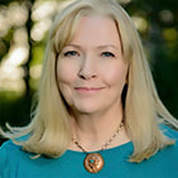 Kate Olson, CPC, CHt, is a Life Coach, Integrative Master Hypnotherapist, EFT & NLP Master Practitioner & Trainer and Reiki Master located in Seattle, Northern Lights Life Coaching www.northernlightscoaching.net & Embrace Change Hypnosis & NLP www.embracechangehypnosis.com. Kate offers workshops & classes, as well as, individual and group coaching. Her emphasis is on assisting clients in finding Path, Purpose and Peace. Kate focuses on integration of mind, body, spirit wellness. It is her mission to help clients find joy through connection, creative expression and embracing change. She is passionate about creativity, travel, personal growth and enjoying life. She has another wellness-related business offering Salt Therapy, Salt Works Saltariums. Salt Therapy offers an all natural treatment solution for respiratory and skin problems. All three businesses operate as Dba's under Total Well Resources, LLC. Kate is a speaker, writer and event facilitator. She is also a radio show host on Contact Talk Radio, www.ctrnetwork.com/embracechange hosting "Embrace Change with Kate ". What is Resilience? Resilience is the process or quality of adapting well to adversity, tragedy, trauma, loss and threats or other significant stressful circumstances. It is that ability to “bounce back” from difficult or challenging experiences. “That even in the face of the most shocking tragedy of my life, I could exert some control over its impact.” ― Sheryl Sandberg If there is one thing that is more important to inner peace and living a joyful life than anything else, it is resilience. Life is full of adversity and even if we look at it as a challenge and an opportunity, which it is, it will always be there. It is the ability to meet those challenges, to push past fear and move forward to bounce back from adversity that makes the difference in our lives. If we have resilience we can overcome anything and come back with our belief in ourselves and our ability to feel joy and gratitude intact. How do we acquire or cultivate resilience though? Where does it come from? Why are some people more resilient than others? Is it something we can develop or learn? To get to the core of resilience let’s look at how resilient people get back up when life knocks them down. These are the people that we look at with awe and can’t imagine going through what they have and coming out not only standing strong, but thriving joyfully. What are the core mental and emotional attributes that they possess that allows them to be resilient? They are self-aware, authentic, confident, capable, self-reliant, optimistic, compassionate, resourceful and tenacious. “Resilience isn’t a single skill. It’s a variety of skills and coping mechanisms. To Bounce back from bumps in the road as well as failures, you should focus on emphasizing the positive.” - Jean Chatzky While there are different factors that incline one person to be more resilient than another, it can definitely be learned or developed. Below are some of the ways to develop a stronger sense of resilience. 1. Keep a positive view of yourself and your abilities 2. Cultivate an attitude of possibility and opportunity 3. Maintain connections in your life. 4. Look for solutions, rather than problems 5. Accept and embrace change as a natural part of life. 6. Set and achieve goals 7. Take decisive and powerful actions 8. Maintain a hopeful outlook 9. Keep things in perspective and be objective 10. Take care of yourself. Treat yourself with kindness & compassion. 11. Know your value and appreciate yourself. 12. Respect your capability 13. Be relentless! Keep going! What is “Joyful Resilience”? It is a mindset and a blueprint for living and overcoming the adversity that is inherent in our lives. We all have the capacity to be resilient and survive a great deal of adversity and emotional disappointment. We have the ability to let go of what has happened in the past and start again. We have the ability to move forward and to be present in the current moment. We have the ability to see not only the negative aspects of what has happened, but also the positive aspects that might be a part of something disappointing. With all of this, we have the capacity to feel joy, even in the midst of the most devastating circumstances. We have the ability to smile when our heart is breaking, to laugh when we are filled with sadness and to reach out and hug someone when we feel like we can barely pull ourselves together. This comes from a will deep inside us that gravitates toward our natural desire to be joyful and happy. If we allow it, our body will move us through the worst of times back to this natural state of “joyfulness” that is at our core. It is the very acts of joyful expression –smiling, laughing, being aware of beauty and kindness that bring forth the chemicals to give us inner strength. If we are not set on staying in a negative and debilitating state of mind, we will naturally move toward those things that heal us, strengthen us and pull us out of the fog of adversity and back into the light of joyfulness. We will smile, we will laugh, we will respond to kindness, see beauty and appreciate the good that is always there and suddenly it will be bigger and more powerful than the adversity that is holding us down. This is our natural healing and our natural blueprint for getting through life and we all have this to carry us through if we will let it. We just need to allow and believe in this process. We just need to do the things that do not block us from our natural course of healing and recovery and we will find our resilience.
How do we cultivate or develop this mindset of “Joyful Resilience”? It is a training or exercising process where we train our brain and our emotions to respond in certain ways. It is similar to the way we learn or practice anything else. When we want our bodies to respond in a certain way, we train ourselves with consistent and repeated practice and if we are diligent we usually get the results we want. It does not just happen with our emotional responses. It also takes a process of conditioning and practice to built the desired response patterns. Like training and conditioning our bodies to be able to respond in certain ways, we have the ability to do this with our mind and our emotions and that is what makes us strong, resilient and able to bounce back from adversity and return to a natural state of joyfulness. There is actually science behind this. When we practice behaviors mentally, physically and emotionally we rewire our brains and form new neuro-pathways. If we can smile, laugh and recognize beauty and kindness, we will actually experience chemical responses in our bodies that lead us toward healing and recovery. As we release serotonin and dopamine we change ourselves on the chemical and cellular level and move ourselves toward a positive and strong state of joy and this is all the natural course of our being. We need to expect and allow this to happen, rather than blocking these natural recovery resources. Not only do we need to allow the process, but like a highly trained athlete, we need to train and practice those responses to be our strongest and most joyfully resilient selves. “Joy, collected over time, fuels resilience." -- Brené Brown  About the Author: Barbara Krauss is a STORYOGRAPHER. She is a steward of creative inquiry. Her work is an organic blend of creating and writing stories, gathering stories of others, and giving them a voice. Combining her expertise in coaching/mentoring, inspirational teaching, motivational speaking and facilitating workshops, she powerfully holds space where creative engagement thrives. She is most alive when enraptured by the organic flow and freedom of immersion in creative expression and invites others to join her in this realm. Her business is called The Centre for Organic YESipes (yes-a-peas), a place to learn, grow and become. A center for exploration, creativity and playful bantering. A space to simply hang out and be your essential authentic you. http://www.barbarakrauss.com My passion is gathering, collecting, and sharing stories in an effort to heal women and transform the world. We have all heard the advice to "Be Still" -- but today I'm going to share with you a story of stillness as a recipe – or what I call a YESipe - which you can follow for yourself.
Imagine you are sitting around the kitchen table, trading recipes with women of many generations. Just as women do this to share their favorite ways to nourish their families, I shall share a recipe and invite you to try it. See how delicious it tastes! In Stillness there is still movement. In Silence there is still sound. The quality of their essence is splendid when we can taste and embrace the lusciousness of exactly what they are and how they nourish and soften our souls in the moment. This is a recipe for finding your center of calm, tranquility and ease. Begin by being in the present. Allow yourself to settle into your sacred space. Soften your thoughts, open your heart and listen. Become the container from where your creation will be birthed. Light some candles, put on soft music, prepare a cup of your favorite tea and begin to gather the ingredients for this most delectable experience. Gently fill your vessel with a tablespoon of the grounding of your breath and the delicate essences of: • Sensations in your body • Feeling your feet on the ground • Experiencing the support of the earth and • Relaxing with the ebb and flow of your breath Next, add a cup of lengthening and relaxing and a spoonful each of: • Expanding into the fullness of your being • Resting into gravity and • Giving access to your wisdom Gently stir all of the ingredients together. Ease your grip; release the need to hold yourself together. When you have obtained the desired consistency of letting go, add to 2 cups of balancing your attention, ¾ teaspoon of energy in space and one tablespoon each of: • Experiencing your body • Feeling the space behind you; the space in front of you; to the right and to the left of you, and • Noticing the space below you and above you Finally add a cup and a half of invoking your intention. Blend in ½ teaspoon each of aromatic inquiries. Include: • What would it feel like if I had a little more ease in my being? • What would it be like if I had more patience? • What would it feel like if I had more compassion? • For the sake of what do I want to respond in this moment? Bring a spoonful of your nectar to you lips and taste its magical spirit. Find your breath in the center of your belly. Notice what shifts in your body and mind. Pay attention to the nuances that arise spontaneously. Be in your stillness. Be in your silence. Be in the moment. Listen.  About the Author: Kate Olson, CPC, CHt, is a Life Coach, Integrative Master Hypnotherapist, EFT & NLP Master Practitioner & Trainer and Reiki Master located in Seattle, Northern Lights Life Coaching www.northernlightscoaching.net & Embrace Change Hypnosis & NLP www.embracechangehypnosis.com. Kate offers workshops & classes, as well as, individual and group coaching. Her emphasis is on assisting clients in finding Path, Purpose and Peace. Kate focuses on integration of mind, body, spirit wellness. It is her mission to help clients find joy through connection, creative expression and embracing change. She is passionate about creativity, travel, personal growth and enjoying life. She has another wellness-related business offering Salt Therapy, Salt Works Saltariums. Salt Therapy offers an all natural treatment solution for respiratory and skin problems. All three businesses operate as Dba's under Total Well Resources, LLC. Kate is a speaker, writer and event facilitator. She is also a radio show host on Contact Talk Radio, www.ctrnetwork.com/embracechange hosting "Embrace Change with Kate ". What is Ego and why do we need to let go in order to have healthy relationships with ourselves and others? Is ego good or bad? The dictionary definition would not indicate any negativity, so how and why is ego a problem. Ego – a definition of a person’s sense of their own worth, self-esteem, valuation or perception of self While the above definition does not say anything about ego that would lead someone to the conclusion that ego is negative in any way, it is the attachment of ego to situations and circumstances or occurrences in our daily lives that leads to much of our own suffering and unhappiness in life. There is really no need to make a judgement about ego, as being bad or good. It is tying it to what is happening outside of ourselves that causes problems and leads to judgement. For instances, when someone says something offensive or negative to us or about us, if we hold on to that and let it affect us, it is ego that we are giving in to and suffering as a result. Or, if we try to gain acceptance or approval from a group or a person and we are rejected or snubbed and we react to that in a way that alters the way we think of ourselves again, that is ego. If we allow ourselves to feel “less than” or “more than” based on their judgement, we are reacting to ego. Ego can also be an over attachment to our own interests, where they become our central motivation without concern or regard for others. It may be easier to understand what ego is not. Ego is not self-esteem. Ego may be attached to self-esteem, but it is separate from healthy self-esteem. Some people think you are talking about conceit, arrogance or over-aggrandization of self when you mention ego. Some call that having a “big head”— building one’s self up to unrealistic proportions in one’s own mind. This can be a part of ego, but it is not necessarily the only manifestation of ego and one does not need to be projecting this extreme characteristic in order to be bumping up against ego. There are less obvious and outrageous ways in which ego can be an obstacle to us and our best and healthiest presentation of self or healthy self-esteem. We are often dealing with ego when we feel resistance to something or someone that causes us to go against our own best interests or to be uncaring about the interests or intentions of others, sometimes reacting in a rude or unfeeling way to project a sense of superiority to others. When you have a strong response to someone or something they are doing, it might be good to question whether you are bumping up against their or your own ego. It may or may not be the case, but it is probably a good starting place to look at. Looking at this aspect of yourself and learning to let go in these situations, will be a very freeing and self-affirming moment. When we see ego in someone else, it is almost certain that we should look at our own. We can never change to actions of another person, but if we are reacting to somethings perhaps that is a message and we can change our own actions and responses.
Ego is selfish in a way that does not serve self well. It might involve anger or resentment and usually includes the need to be right and get the last word in. If you feel it in your body – there is usually a lot of tightness, you might feel shortness of breath and getting a headache or having pains in your neck and back are common physical manifestations. This can’t be good, right? Ego is an internal battle that is a no-win for anyone, if you decide to fight it out. The only way to win is to take a deep cleansing breath and let it go! Whatever it is, -- just step back and let it go. It steals your peace and joy! That is really too high a price to pay. Love yourself completely and hold yourself in the highest self-esteem. Let ego go and you will be happier and healthier! 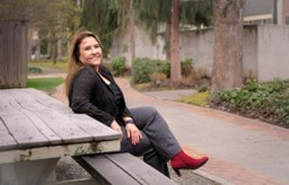 About the Author: Revital Shiri-Horowitz, is an author, poet and blogger. She was born and raised in Israel. Shiri-Horowitz earned a B.A. and M.A. in Geography and Hebrew Literature from Tel Aviv and Haifa Universities. Shiri-Horowitz publishes her books both in English and in Hebrew. “Daughters of Iraq” (2011) earned an award from “The Jewish Iraqi Heritage Center” in Israel. The book tells the female story of Jewish life in Iraq and immigration to Israel in the early fifties, after Israel was established in 1948. “Hope to See You Soon” (2014), is a women immigrant story, always divided between two homelands. Her new book, It`s Just Your Imagination speaks about her personal journey of growing up with a narcissistic mother. The book won a “Pinnacle Book Achievement Award” in the Self-Help category. Shiri-Horowitz lives in the Seattle area and still dreams in Hebrew. Website: www.revital-sh.com Twitter: https://twitter.com/RevitalHorowitz Facebook: https://www.facebook.com/Revital-Shiri-Horowitz-108002329286503/ Growing up with a narcissistic mother – Insights of my personal journey
Only at the age of forty-eight I came to learn “what was wrong with me all those years”. My mom came for a couple of weeks from Israel to visit my kids, my husband and me, and acted out like she always did. But this time something happened to me; I could no longer look at her the same way as before. I saw her actions that included lying, manipulating, and trying to get her way no matter what the cost to people around her. I saw her real self, which provoked lots of childhood flashbacks and wounds. I found myself crying for hours, as my heart broke. I just could not understand how a mother who is supposed to treat her daughter with love behaves this way; I was a total mess! My husband found a therapist and dragged me to see her. It only took a few minutes, for her to say: “Look, it is not really you, it is your mother… She is a narcissist, and you were raised by a narcissistic mother”. I did not quite understand what she meant, so she gave me a few articles and a couple of books to read and sent me home. It has been a long five years since then - of understanding and healing myself - and during that process I wrote a book called It`s Just Your Imagination, something my mom used to tell me whenever I confronted her about a lie she just told, about things I saw she did, and she did not like what I had to say about them: “I did not say that. It`s just your imagination”, she would say to me. When you are being told again and again that everything is “Just your imagination” it makes you doubt yourself all the time. Maybe I did not really see what I saw, or hear what I heard, after all. This life changing journey I went through was not easy. Understanding you were raised by a narcissistic mother means that you were never loved by your own mother. While learning and understanding is super important in such a journey, it is only the first step in your journey. Healing the heart and moving on takes time and energy. There was a huge gap between the mind and the heart that needed to heal. “It`s Just Your Imagination” speaks about my process of learning, and understanding What it is, how it feels, mourning the childhood I never had, and becoming a much stronger person. I promised myself I will always do my best to help others, as this is my mission.  About the Author: Kate Olson, CPC, CHt, is a Life Coach, Integrative Master Hypnotherapist, EFT & NLP Master Practitioner & Trainer and Reiki Master located in Seattle, Northern Lights Life Coaching www.northernlightscoaching.net & Embrace Change Hypnosis & NLP www.embracechangehypnosis.com. Kate offers workshops & classes, as well as, individual and group coaching. Her emphasis is on assisting clients in finding Path, Purpose and Peace. Kate focuses on integration of mind, body, spirit wellness. It is her mission to help clients find joy through connection, creative expression and embracing change. She is passionate about creativity, travel, personal growth and enjoying life. She has another wellness-related business offering Salt Therapy, Salt Works Saltariums. Salt Therapy offers an all natural treatment solution for respiratory and skin problems. All three businesses operate as Dba's under Total Well Resources, LLC. Kate is a speaker, writer and event facilitator. She is also a radio show host on Contact Talk Radio, www.ctrnetwork.com/embracechange hosting "Embrace Change with Kate ". There is a quote by George Bernard Shaw, “We don’t stop playing because we grow old, we grow old because we stop playing!” I believe this is true and that play is important not only to keep us young and vibrant, but in all aspects of our physical, mental, emotional and spiritual well-being. When we are children play is our job and our major way of learning, as well as, an emotional, physical and mental resource and outlet. This does not really change, just because we get older. When we stop playing, we are losing an important resource, outlet and form of expression. This does not have to happen and probably shouldn’t happen. In play, we use our imagination and creativity, as well as, testing our abilities on every level. Play has so many beneficial effects on our mind and body and is one of the main channels for growth. There are many forms of play using the whole spectrum of our skills and abilities and energizing every aspect of our mental and emotional expression. Science has proven the effects play has on us mentally, physically and emotionally. It is the same as comparable experiences that are “real” or not done in the form of play. It has also been shown that imagining an experience affects the body and mind similarly to the real experience. Have you ever imagined what something would taste like, feel like or look like? It can seem very real! I have had a dream where I was falling and woken up to find myself actually falling off of the bed or imagined a scary situation where I got chills. I have imagined how something tasted and actually found myself salivating. Most of us have had these very real feelings come about as part of play. Children naturally use play in a beneficial way to enhance their life experience and learn from those experiences. With these benefits, why do we stop playing, for the most part, as we become adults? Child’s play is definitely not just for “children only” and we all should make an effort to play more. Maybe our form of play may change or up-level to some degree, but we need to keep our minds and bodies engaged with creativity and imagination. It has been shown to keep the neural pathways in our brain growing and to slow deterioration and ward off disease. When it comes to brain development, time in the classroom may be less important than time on the playground.
"The experience of play changes the connections of the neurons at the front end of your brain," says Sergio Pellis, a researcher at the University of Lethbridge in Alberta, Canada. "And without play experience, those neuron aren't changed," he says. (National Public Radio, US. - https://www.npr.org/sections/ed/2014/08/06/336361277/scientists-say-childs-play-helps-build-a-better-brain) Therefore, as we become adults and grow older how can we expect the brain to change modes and learn without this important imaginative and experiential tool. Play is very important to keeping our brain flexible and growing, which is called neuroplasticity. If you are interested in finding out more about the neuroscience of play, follow the link below and watch a video from the Aspen Ideas Festival with Stuart Brown talking about Neuroscience and Play! https://www.aspenideas.org/session/neuroscience-play-what-play-does-you-and-your-brain-and-what-happens-you-if-you-dont-play Play has many different elements and other components which involve sensory experience can be part of it, like music, dance, games, humor and physical exercise or competition. It can be mostly a mental exercise, very physical, emotional or a combination of these. Play is an altered state and an exploration of “what ifs”, “could bes” and all that is possible. Play is random and spontaneous and an adventure in going beyond what is certain! Play gives context to chaos and helps us to understand our evolving world. It starts as nonsense and silliness that leads to discovery. If you want to defy aging or maintain a semblance of youth, play is probably the primary way that this can be done. It is probably the only reasonable way of staying both healthy and younger. So, keep playing in your life to live longer and enjoy life more while you are here. It will keep the brain synapses firing and that is key to awareness, alertness, learning and growth. “When children pretend, they are using their imagination to move beyond the boundaries of reality. "A stick can be a magic wand, a sock can be a puppet, a small child can be a superhero.” – Fred Rogers If we can keep that child alive in us and allow curiosity and play to flourish we, as Adults, have that same boundless possibility!  About the Author: Anne Hunter Logue was born in New Jersey, lived in Colorado and currently resides in Pennsylvania. Anne has studied the healing arts extensively. She is a Reiki Master, trained in Quantum Touch, certified Hypnotherapist, certified in Neuro-Linguistic Programming and Healing Touch, a form of energy healing that was founded by a Colorado native, Janet Mentegen. Anne’s ties to Colorado through Healing Touch keep her connected to the community, experimenting and developing new ways of creating change and new approaches to some of life’s curve balls. Her practice is in her home in Pennsylvania and she has done workshops and healing fairs there. Anne’s father died when she was a freshman in college. One of the ways she dealt with this was through poetry, writing and art. She wrote a story about the sun, which was her way of figuring out who she was and what she was meant to do. The Story of the Sun was illustrated by Anne and is her view of life as a 20-year-old. That view still holds meaning for her and has become a way of connecting with children and helping them learn who they are and what they were meant to do. It integrates her interest and love of the healing arts with her artistic side, bringing a refreshing look at life to the readers. The Story of the Sun was published in 2017 and is Anne’s first book. In addition to her advanced certification in Healing Touch, Anne has done extensive reading and reflection, including research on quantum physics and the holographic universe. She has done workshops and research in the Akashic Records, which are the virtual records that contain all of the information about us in our various incarnations and is a resource for incredible insight and healing. Bringing all of this information into resonance and integrating it with her personal experience has created a new way of experiencing reality. Her focus now is bringing that awareness and understanding to children. She has just finished a publicity campaign to reach audiences that may benefit. Her book has been translated into French and will soon be translated into Spanish. She has written another children’s book, which will be published in the near future. Thinking about our lives, there are so many patterns that seem to repeat and repeat. It is often difficult to distinguish who is the master and who is the student in certain situations. This is the subject I would like to talk about here. Many of you know that my family has been instrumental in teaching me these lessons, most especially my brother, Ken. Ken was diagnosed with leukemia in 2003 and we became very close during that period of time. I believe that he was and still is my teacher in this regard as I have learned such profound lessons from his illness, in teaching me faith, understanding and compassion and to some extent how the Universe works within us to create results. I learned during this very intense time that there are some questions that are important to understand when going through a time that seems to be challenging. Learning these questions can help us to move through seemingly impossible situations with grace and even joy as we uncover more and more about ourselves and our role in the lives of those we come in contact with. So, one of the most important aspect of our lives is relationship. We have relationships with EVERYTHING, not just the people in our lives. I came upon this fact and it has changed my understanding of many aspects of my life. For instance, we have a relationship with our home, what it means to us, how it can protect us and comfort us, how it can create security, etc. Did you even think that you also have a relationship with money? Who would think that how you view money would have an impact on your life and what you do and how you move through your life? Is money an evil that is necessary for life? Is money something that empowers you? Where do you get money from? From being “worthy”, from friends, from employers, from family members? Where does it come from? How is it used? To promote equality, help others, create comfort for you and your family, to demonstrate dominance, or mastery (maybe status?) Consider these questions when you open your wallet next time to pay for something or pay a bill or want to plan for a vacation or trip. Money, as with everything in our lives, is energy in action and how we appreciate it, use it for good and are grateful for the people who bring it into our lives, creates abundance and value for ourselves and others. So here is another consideration, what about our relationship with time? When we consider how we spend time (interesting that is the same phrase used for money, spending) then we are conscious of our priorities and who and what we value. Do we spend time taking care of our bodies, by eating healthy, exercising, doing fun activities, biking, canoeing, hiking, etc.? Do we spend our time learning more about the Universe and our part in it through history, geography, politics, spirituality, etc.? Do we like to spend time watching TV, relaxing letting others do our thinking for us and be entertained? I think we can take a look at a lot of aspects of our lives and evaluate what we prioritize without even thinking about our intentions. It is a valuable measuring device for us to find out what we value and how much we are invested in creating more value for ourselves and those in our lives. There is another important word that I have come to recognize as important and that is expectation. We all have expectations. We expect our family to love us and care for us. We expect to have enough food to eat and a safe and secure place to live, we expect to have friends and people to enjoy our lives with, etc., etc. These are familiar and worthy expectations. When we create expectations of others and hold fast to these expectations and are constantly disappointed in the way others behave because they are not meeting our expectations, then that is a different matter. Truthfully, are we not all guilty of this exercise? Expectations can drive many relationships, all of the relationships we have mentioned above. Our love relationships are driven by expectations very often. If we have a significant other, we expect certain things from them and can be very disappointed if (even without our communicating our needs or desires) the other person does not meet our expectations. Our expectations about money is also a big example, as are our expectations of ourselves with regard to time. We “should” be at a certain point in our lives by a certain age, have a certain degree of “success”, be spiritually enlightened, be popular, whatever, at a certain time in our lives. So how we frame and use our expectations to enrich our lives or create disappointment and/or happiness because we have met our expectations regarding these issues.
The importance of how we “frame” our experiences is something that I learned from my study of Neuro Linguistic Programming. I have come to understand that it is not so much the situation, because we all encounter situations that are troubling to us, it is really our reaction to the situation that is crucial in determining our “relationship” to it and the outcome it will have either positive or negative in our lives. I will give you an example of how our response to certain situations can affect us. In using the recent election as an example, and depending on how you perceive the outcome of the election, when you think of President Trump, does that create a sense of pride for you in America that he represents the values that you hold dear and want to fight for, or does his role as President create a dissonance for you, an injustice in the fact that you perceive his role does not identify the values you hold dear and he does not embody the kind of policies that you would like to see implemented? Chances are quite strong that whichever way you identify your concerns with the outcome of this election, that has to some extent, dictated your actions with regard to your role as an American citizen. So, it is not really the situation in and of itself, it is your RELATIONSHIP to the situation and how that creates a response for you either of acceptance and harmony, security, comfort, etc., or dissatisfaction, resistance, change, inequity, etc. Your perception of this situation will be the driving force of how it affects you and the people around you. When we think about change, do you realize that a “perfect” situation will not create change? If everything is in harmony and balance, change will not occur, so change can only occur when there is an imbalance and we strive to bring things back into balance. Interesting, huh? So, we see that our response to a situation is really more important than the situation itself. We often cannot change a particular situation, but we can change and be aware of our response to it. This brings me to another important factor and that is perception. Have you ever been reading a post on Facebook and thought, wow, this person is so __________? I think they are great, love them, like what they say, or conversely, I can’t stand the way they said that, showed me that, are that. It makes me feel like they are so selfish, conceited, etc. So, our perception of people and situations is very important. Perception also comes into play with our perception of the world/Universe and our role in it. Do we have a good RELATIONSHIP in the world, do we believe people are essentially good and trying to do good, or do we think people are mostly bad and only some people are good, etc., etc. Look how all these crucial words come back around and show us things about ourselves and how we act/interact in the world. Perception infers a kind of inner insight to me, something intangible that we “perceive” gives us an edge over other people perhaps. How do we perceive ourselves in relationship to the world we live in, our community, society, family, etc.? So, the final word that I have recognized as being very important to me is interpretation. We can see that interpretation of events, situations, actions, can also play a big part in what that particular event will mean to us. Do we see an event as unimportant, inconsequential, insignificant, or crucial, valuable, essential? Whichever way we interpret situations can determine how we respond to the event and what value we derive from it ultimately. Are we open to the information available, or resistant, what does it mean for us? I have explored a bunch of seemingly insignificant words to find that each one can create further value and meaning in our lives or can create confusion and disillusionment. I enjoy exploring these issues in my practice using my knowledge of the Akashic Records, hypnosis, Neuro Linguistic Programming, and Healing Touch and Reiki. I have just finished my first book, a children’s book called “The Story of the Sun” and it makes you think about some of these issues and how we perceive them and what is our part to play in the unfolding events that await us every day.  About the Author: Kate Olson, CPC, CHt, is a Life Coach, Integrative Master Hypnotherapist, EFT & NLP Master Practitioner & Trainer and Reiki Master located in Seattle, Northern Lights Life Coaching www.northernlightscoaching.net & Embrace Change Hypnosis & NLP www.embracechangehypnosis.com. Kate offers workshops & classes, as well as, individual and group coaching. Her emphasis is on assisting clients in finding Path, Purpose and Peace. Kate focuses on integration of mind, body, spirit wellness. It is her mission to help clients find joy through connection, creative expression and embracing change. She is passionate about creativity, travel, personal growth and enjoying life. She has another wellness-related business offering Salt Therapy, Salt Works Saltariums. Salt Therapy offers an all natural treatment solution for respiratory and skin problems. All three businesses operate as Dba's under Total Well Resources, LLC. Kate is a speaker, writer and event facilitator. She is also a radio show host on Contact Talk Radio, www.ctrnetwork.com/embracechange hosting "Embrace Change with Kate ". It should be the easiest thing in the world just to be yourself, right? Why is it then, that there are so few people that manage to be who they really are and express themselves in a genuine way in life? I think that children start out instinctively knowing who they are and learning quite naturally to express themselves in a genuine way. When do we start diverging from our real self and becoming someone else? I don’t think it is something that happens quickly or consciously, but more a slow process we hardly notice as we conform to other people’s expectations and sometimes even our own expectations, betraying in small ways our core selves, until one day we look in the mirror and hardly recognize the person we see. Or maybe, it is not something we see, but somehow just feel that we have become someone we don’t know. We feel out of sorts, misaligned or incongruent, like we are trying to fit in somewhere we don’t become. As a life coach and hypnotherapist, I see clients all the time who are seeking clarity and say they feel lost and confused. They feel stuck or just don’t know who they are any more and find it difficult to make any decisions at all. Nothing feels right. What I usually find is that they are out of alignment or congruence with themselves and their core values. All of the parts and pieces that make up “you” and work together in sync are out of wack. You feel confused and something says you should not be who you are. Every action chips away at that person you were born to be and you lose trust in yourself. You begin to doubt your own basic instincts and the sense of internal guidance that comes natural to you. Yes, we must learn discipline and what is accepted and expected behavior in certain situations. How can we do this and stay that unique person that is authentically "us"? How does this happen? How do we lose ourselves? It happens incidentally and accidently, as we react to everything and everyone in our environment. The little girl that is told she should not talk so loudly or the little boy that is told “boys don’t cry “, begins to doubt their own feelings and tries to behave as others think they should. Can’t, shouldn’t, must, don’t and every little doubt chips away at our core self! How do we navigate this without becoming someone we are not, without loosing our spirit and uniqueness? While this does not happen to everyone, it does happen to many people at some point in their lives to one degree or another. When our body is out of alignment, we can go to a chiropractor or physical therapist or sometimes do a series of stretches and exercises that will put everything back into place and set us back to functioning and feeling as we were meant to. How do we go about that when it is our internal self, the very core of our being, our internal guidance system, that is out of alignment? It is a process of awareness and focus, a deep looking inward to find the truths that resonate with us and fit us on the deepest and most basic level. It is knowing yourself and acting in accordance with our core values and beliefs. It is a true self-awareness that feels comfortable and we can fall into with ease and simple grace. How do we go about finding ourselves or getting back to our true self? It does take some stretching of a mental and emotional sort and self-examination to get back to that true and authentic self and feel comfortably in-sync. Where to start is sometimes the hardest question. a little alone time is usually a good starting point. Taking some time to be with yourself and acknowledge how you really feel about things and what pleases or gives you bliss on the most basic level without outside influence will help. Getting in touch with your inner-child and remembering who you were and what you liked as a kid can give you precious insight. Were you artistic, athletic, organized or carefree? Did you have an active imagination? Were you quiet or the loudest kid in the room. Did you like attention or prefer to quietly observe? All of these are characteristics and all of them are good and positive. There is nothing about us that is not beautiful. Yes, we sometimes have to learn to use our qualities in context, but we don’t have to be someone we are not or give up those traits that feel true to us. First, because we will never do it successfully and secondly, we will always feel like we are missing a piece of ourselves. Lastly, we will not come across as authentic to others. Have you ever met someone who seems to be behaving in a way that does not seem “true” or authentic, even though you have never met them before? They just don't resonate as "real" or authentic! You can feel that they are not “themselves”, even though you have nothing to go on, except, a feeling. Chances are, as you get to know them better you will see that “real self” come out, if only for a moment and as you glimpse that person you will feel more comfortable with them. So, if we are forced or choose to mask and hide our natural traits, we not only feel inauthentic to ourselves, but to others we meet and interact with, as well. Try doing things you loved as a kid or connecting with people you knew long ago. This can sometimes help to bring out that original self. As a kid, I loved art, writing, music and creating of all types. During the period of my life that I was most lost and out sync with myself, I had none of those activities in my life in any form. I remember my sister commenting on the fact that I didn’t even have any pictures on the walls in my apartment. I was a tomboy as a kid and really loved the outdoors and games or competition of all types. I was not doing anything that connected with that part of myself in any way. I loved animals as a kid and I had no pets or any connection with them at all. I loved reading and learning as a kid and I couldn’t remember the last time I read a book that wasn’t business related. I did not realize all of this and more, all at once, but I definitely felt that I was not the “me” that I wanted to be! Basically, I was at the crisis point that a lot of my clients come to me in. My life had literally fallen apart and I was being forced to evaluate how it had happened and what I could do now. I was asking myself, “Who in heck are you?” and not liking the answer. The process of reconnecting started slowly and was a journey of renewal and discovery that felt so good. I often, refer to it as getting in touch with my “wise child” and realizing the little person I started out as was someone I really loved and respected and was “very proud” to be. I wanted to be her again and once I got started, it was so easy to be her because it just fit, like a pair of soft warm pajamas just out of dryer that are so warm and comfortable, you just know you want to put them on.
I started recreating me a step at a time connecting with the things I enjoyed doing and that gave me bliss. I really asked myself what things felt like and enjoyed those things that felt completely good and right. I expressed my feeling and started to feel more “me” the more I did this. I spent time with people who accepted me and made me feel good! And, the more I felt good it seemed, the more people I felt good around. It’s funny how that works! Now, my house is filled with art and I enjoy being there. My life is about creating! I love to travel and be in the outdoors. If I have a challenging day, seeing a beautiful sunset or being in nature will always bring me back to balance and a happier state. I listen to music all the time. In the process of coming back to myself I went to 17 concerts in one year, partly fulfilling the list of concerts I had said I’d go to “someday” and partly just getting back in touch with music I loved! I connect with people more these days and realize that it’s important to me, especially being connected to my family, but I also spend a good amount of time alone –feeling connected to myself on a deep level and making sure that little girl I love, the “real me” is still there with me. I will be continuing this journey, as I have realized that we are a “work in progress”, always changing and growing, but staying connected to our core and being “brilliantly authentic”, like a rare one of kind gem!  About the Author: Tammy Wilson Smith, PT is owner of Healthy Transformations and founder of Fun Fitness and Fabulous Food, a compilation of 3 programs to strengthen your body, nourish your soul and open your heart. Safe & Savory, Play with Purpose Retreats and Hiking to Happiness all offer opportunities throughout the year no matter the weather, your experience or your health goals. Here, we combine fun movement and nutritious food with new friends in a safe uplifting environment. We encourage vulnerability in trying new things from new moves, new food, to new thoughts and experiences. Tammy's expertise as a Physical Therapist for over 30 years and her recent Wilderness First Aid training assure you are well taken care of in any circumstance. Visit www.tammywilsonsmith.com to experience past events, new registrations and a hiking calendar coming very soon. It’s been 18 years since my sister Nancy was diagnosed with leukemia and my world was shaken. She was my person and to this day gifts me with wisdom, compassion, love and understanding. She introduced me to Louise Hay, Caroline Myss, Deepak Chopra and many others. She tried to teach me about protecting myself from toxic energy fields, setting boundaries, and loving myself unconditionally. She is still teaching me those things and I hear her voice and feel her hugs daily. It was such serendipity, that just last week, I was feeling especially sad thinking of her. And the next morning received this email asking to write about the gifts I have received from someone who has passed to the other side. That is no accident. . .just love from her. We were states away from one another, and I could hear it in her voice, that she was leaving soon. Oh, she would try her best to muster up the strength to portray to others that she was on the mend, all while needing several platelet transfusions every week. Nancy decided a few months earlier, she was not going to go the chemo route, as she truly believed in the power of complementary medicine and alternative healing. Being an ARNP herself, and a psychotherapist, she also knew the power of the mind and heart in healing the body. But, I was worried and anxious, afraid of not being able to help her in some way, fearful of not getting to spend more time with her. I took a leave of absence from work, despite the lack up emotional support from other family members, particularly my ex-husband. I ended up taking our daughter out of Jr. High school to spend the second half of those six weeks with us. It was the first of two big decisions I made that year in order to spend more time with her. The second happened a couple months later. They were two of the best decisions of my life. During those first weeks while she was in the hospital having chemo, bone marrow biopsies, IV’s, contracting C-diff and fungal infections, her body languished, but her spirit soared. There was a little pull out bed in her isolation room that I slept on many nights, and she would often waken at 3 or 4 in the morning, unable to fall back asleep. That was when she would share memories of her childhood, of my childhood. You see, she was 12 years older than me, and being a twin, Nancy was essentially assigned to me, while Mom took care of my brother. I was the twin who slept better, ate better and was a bit healthier. We often joked about how she once tipped me out of my stroller and I’ve never been the same since. And we’re not sure if it was accidental. During those early mornings, she would talk of how mad she was as a teenager, having to give up cheerleading practice in order to come home from school to babysit. There were two other siblings between us as well, and she was the highly capable older sister. I missed her so much when she went off to college 300 miles away, just as I entered first grade. When she came home from college on break, she was dressed like a hippie, smoked cigarettes (which my brother and I promptly broke) and said the word “SHIT” a lot. I admired her. When she married and had twin girls, I wanted to parent just like she did. . free spirited, mud pies, and homemade play dough every day. Nancy had a way with words, and could make you laugh with her Norwegian accent, and stories from a time that seemed much different than mine. The stories that affected me the most were those she told of our older sister Julie, who died when Nancy was 4. The family was on a summer vacation from ND to the PNW when Julie became acutely ill. The folks had dropped the girls off with family in Walla Walla, and then left for a second honeymoon on the coast to Seaside, OR. I only understood much later why it was MOM never wanted to visit the OR coast when they would come to visit. Julie died in a few days from viral meningitis. It was 1953, long before grief support groups or even encouragement to speak of loss. Mom had already lost both brothers, and the Norwegian way, was to not speak of it. Nancy remembered the trip home on the train and a black porter (the first person of color she had ever seen) tell her in his drawl, “li’ miss, your sister, your sister is going to be just fine”. Nancy had a way of taking you right into that train car with her, seeing and hearing that porter. She also shared of days in the garden with Grandma Wilson, who could just be with her in silence and talk to the clouds, as if they were Julie.
Grandma was a fit 70 something during that time. She lived 30 years beyond that time, to 100 years old and always had a special spot in her heart for Nancy. And I I think me too, since my twin and I were the youngest of all the grandchildren. Nancy was the one who encouraged me to find myself, to leave an abusive marriage, and to trust men again. She taught me to not be afraid of my emotions, to let the tears come, to speak my heart, and to give big hugs. I think she was match making in heaven 6 weeks after she passed over, with my current husband’s late mom. She has been very present for me during these last couple years as I’ve started a new career and gone down the negative belief path a time or one hundred. She’s the one who says, “atta girl”. I met an intuitive last fall at an event, and within a few minutes she said to me, “your sister is here with you all the time. She’s right there on your shoulder. And she is so proud of you for continuing her work”. |
Blog By Kate Olson Kate is a Hypnotherapist, NLP Practitioner & Trainer, Reiki Master, Energy Healer, Life Coach and more. To find out more about her or her work, click the links below:
Get Kate's Book & Journal!
Living in Joyful Resilience: A Roadmap for Navigating Life's Ups & Downs & Simple Soul Thoughts : Collecting Moments of Joy www.joyfulkate.com About the Blog After 4 years of featuring at least 1 guest Author a month this blog changed in 2020. I loved featuring the posts of other great people who also believe in mind, body, spirit wellness. I will continue to feature articles submitted to me on this topic that align with my own mission. However, finding & reaching out to others is time consuming and I do it for my radio show, Soul Talks and other groups and projects and so for this blog i will be ramping up my own posts and perspective. posting mostly my own blogs. I will be happy & excited to post articles from those who submit them to me. Archives
April 2022
Categories |
Proudly powered by Weebly



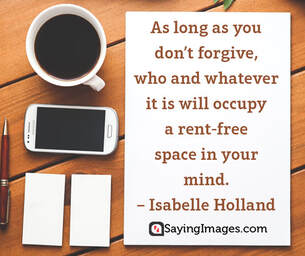
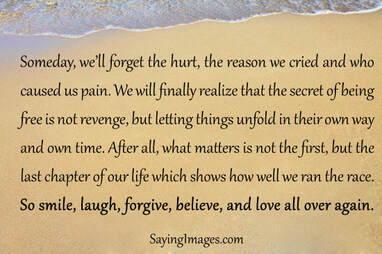

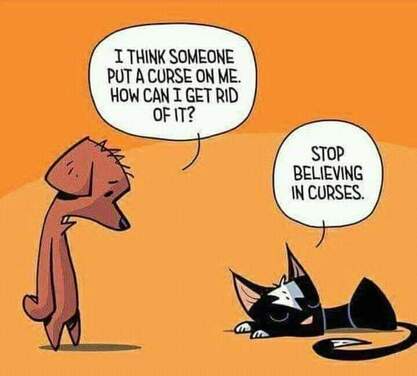
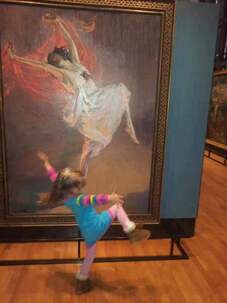
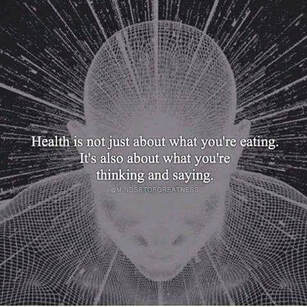




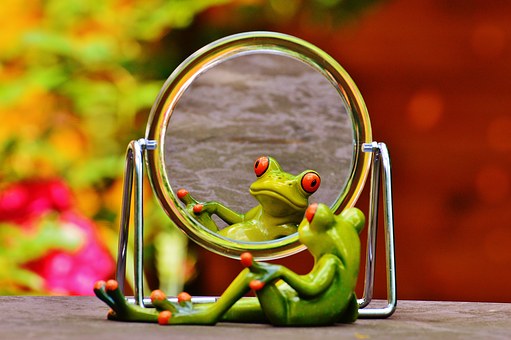

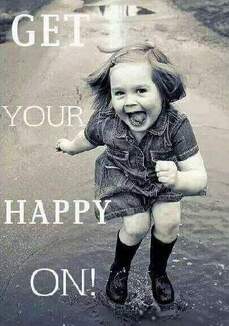


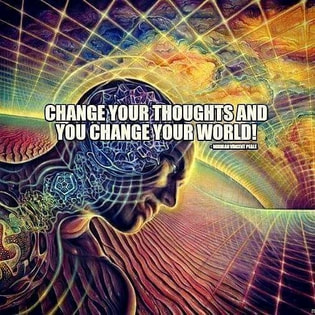
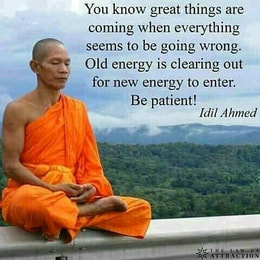





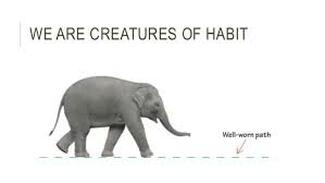




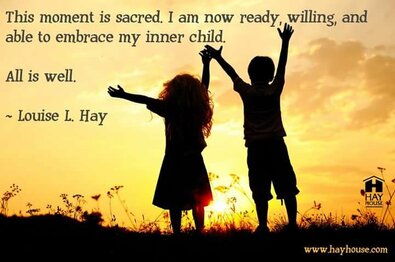

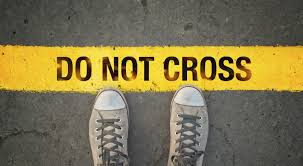

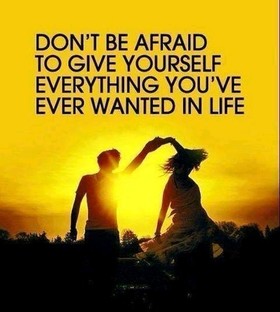



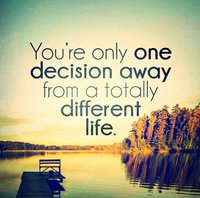


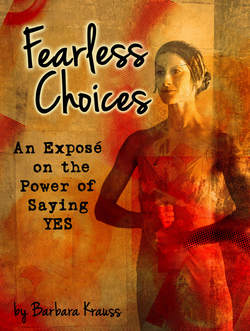


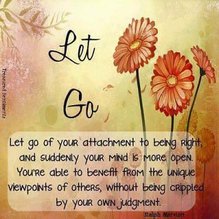

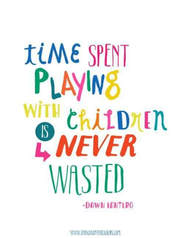





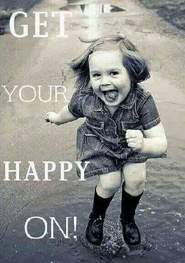
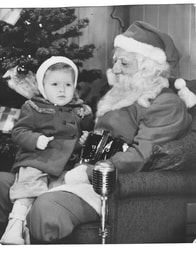

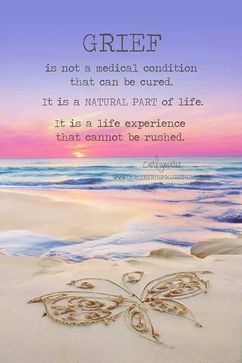
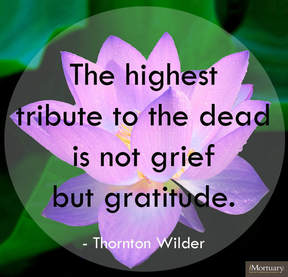

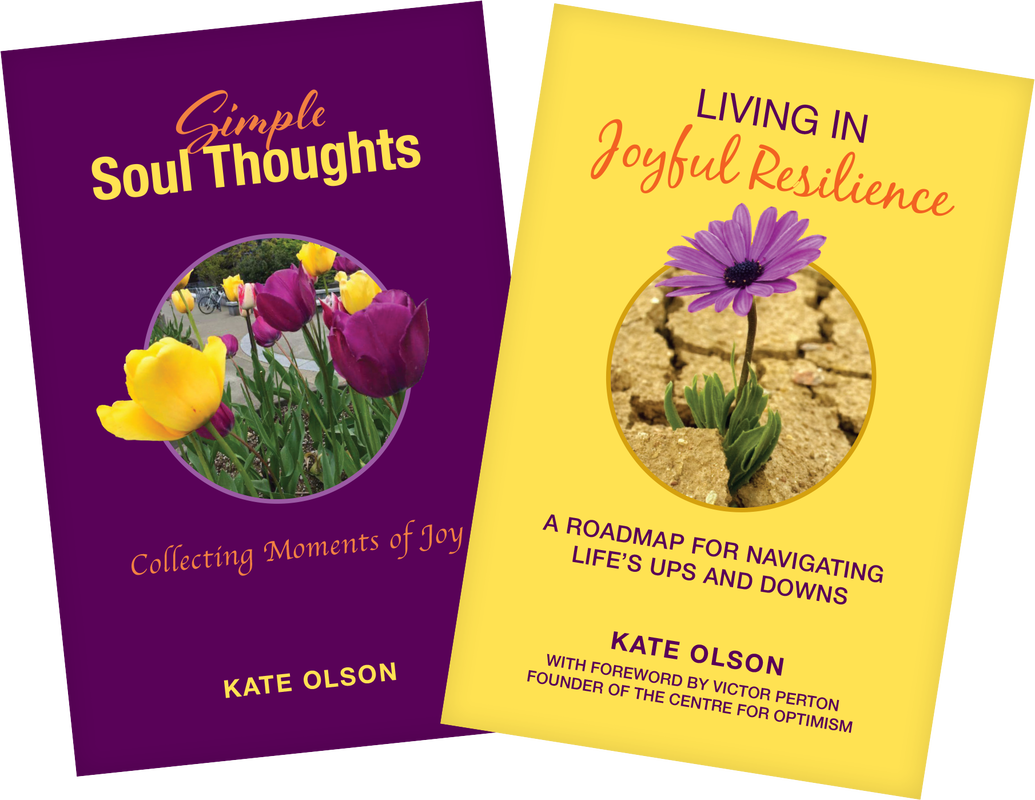

 RSS Feed
RSS Feed